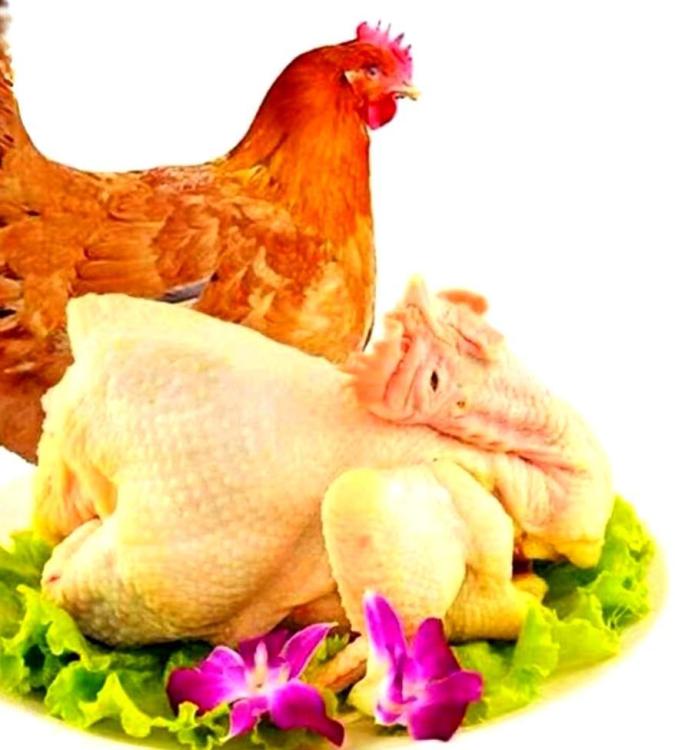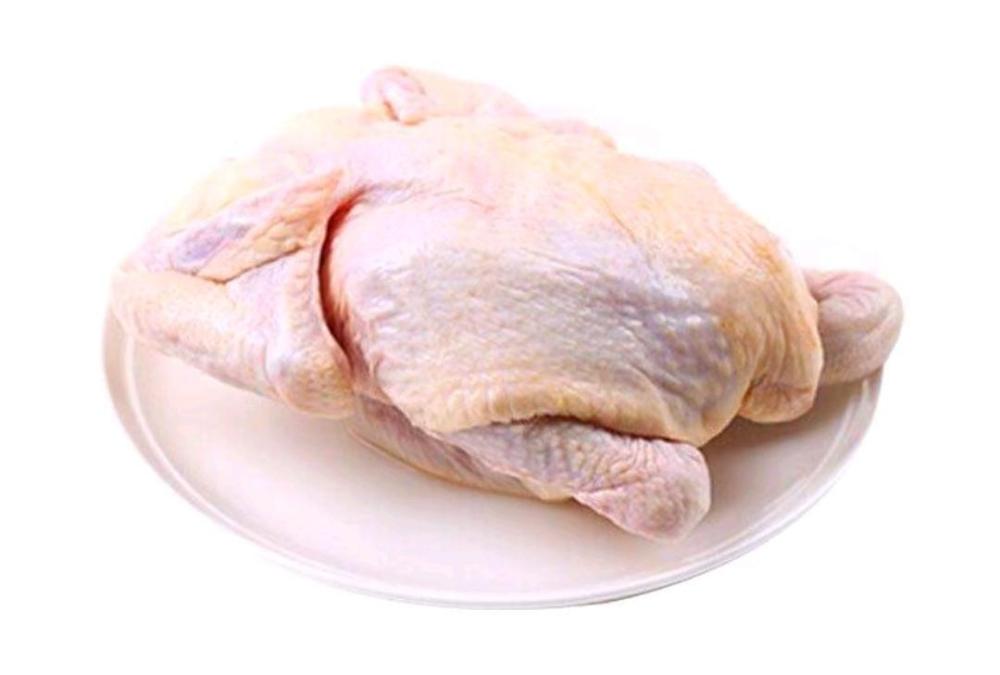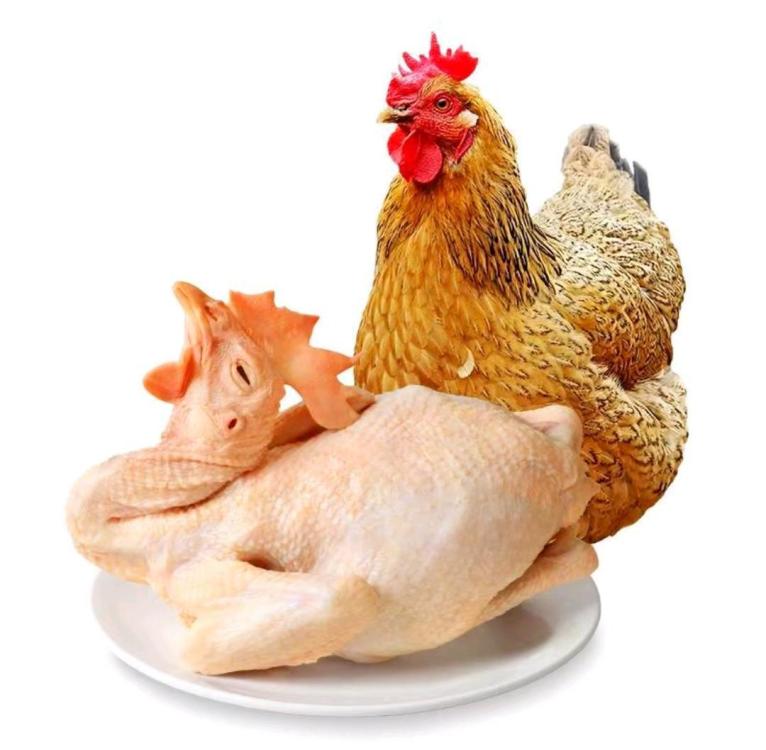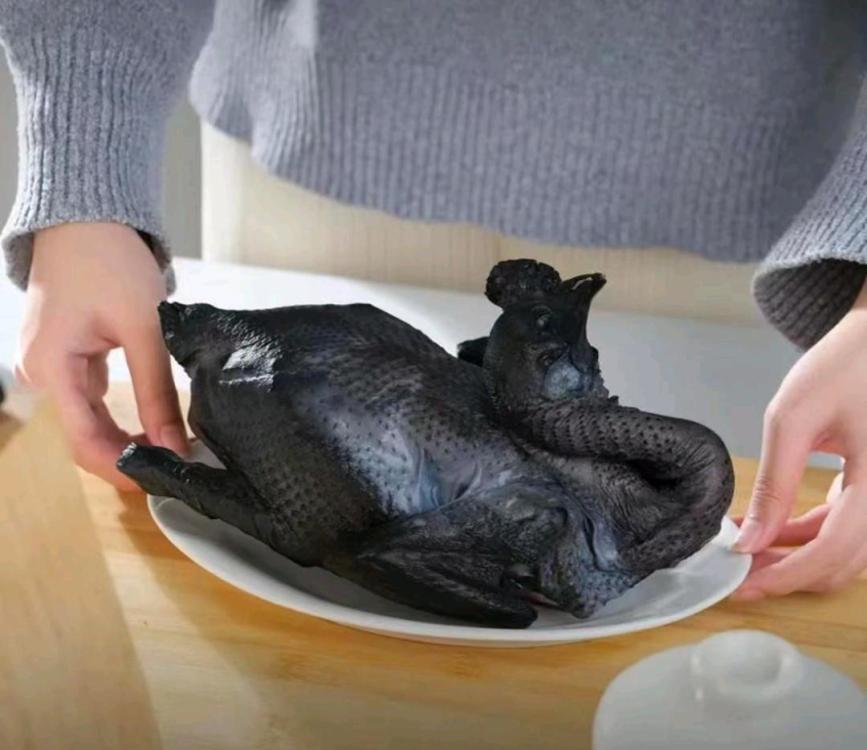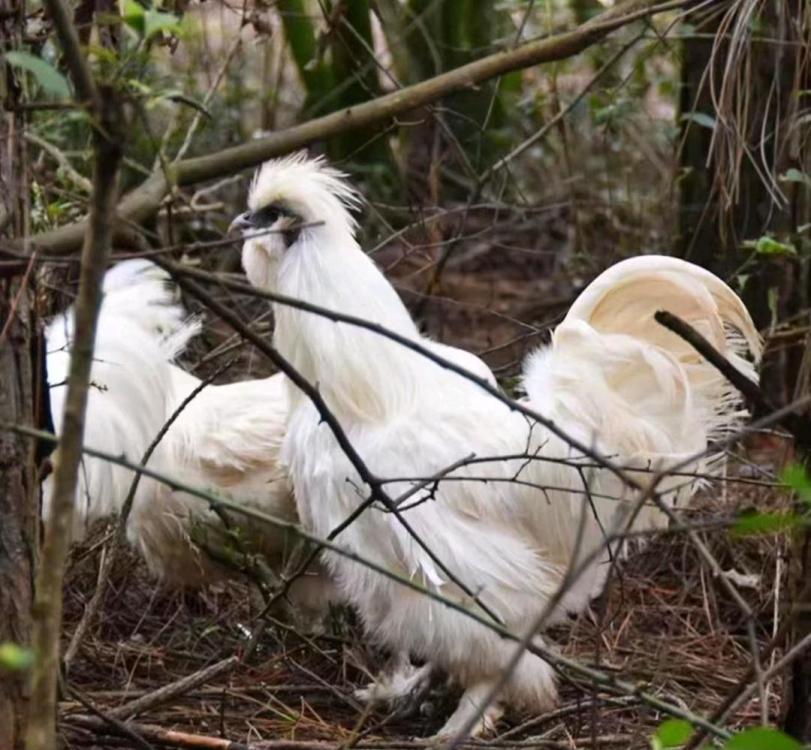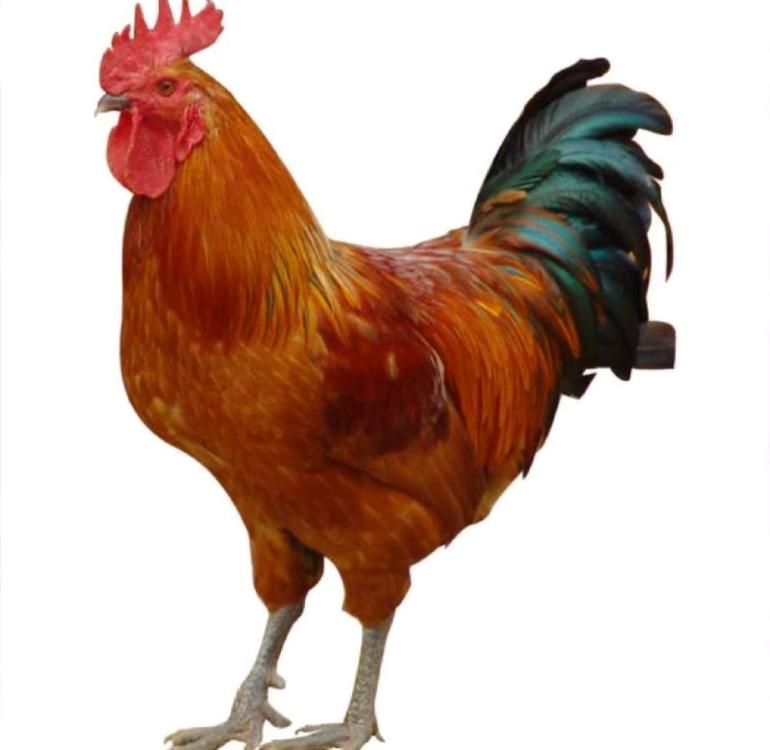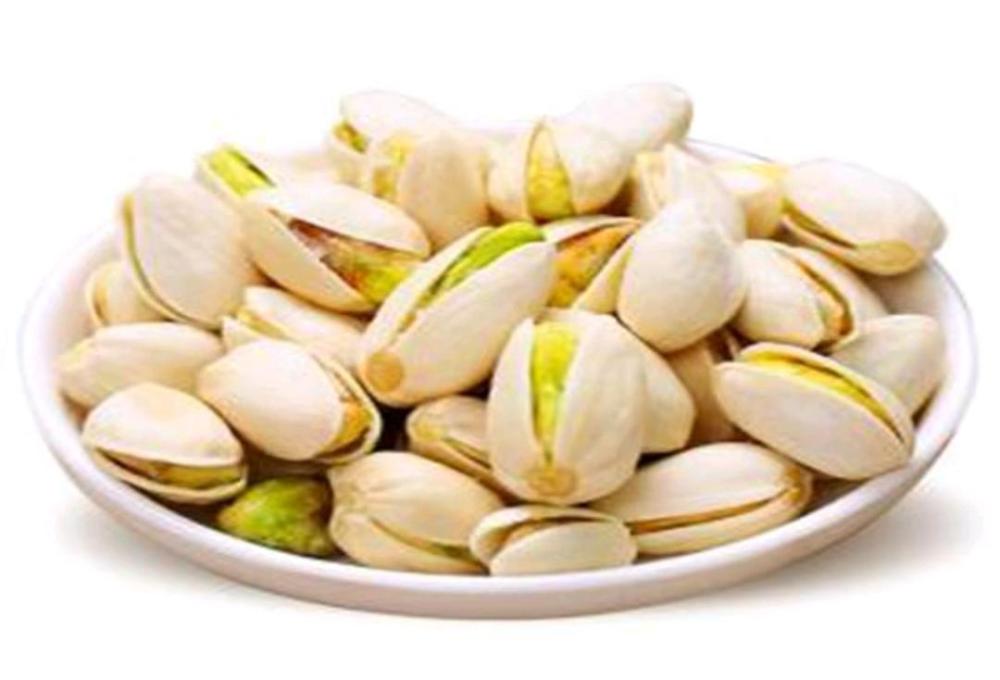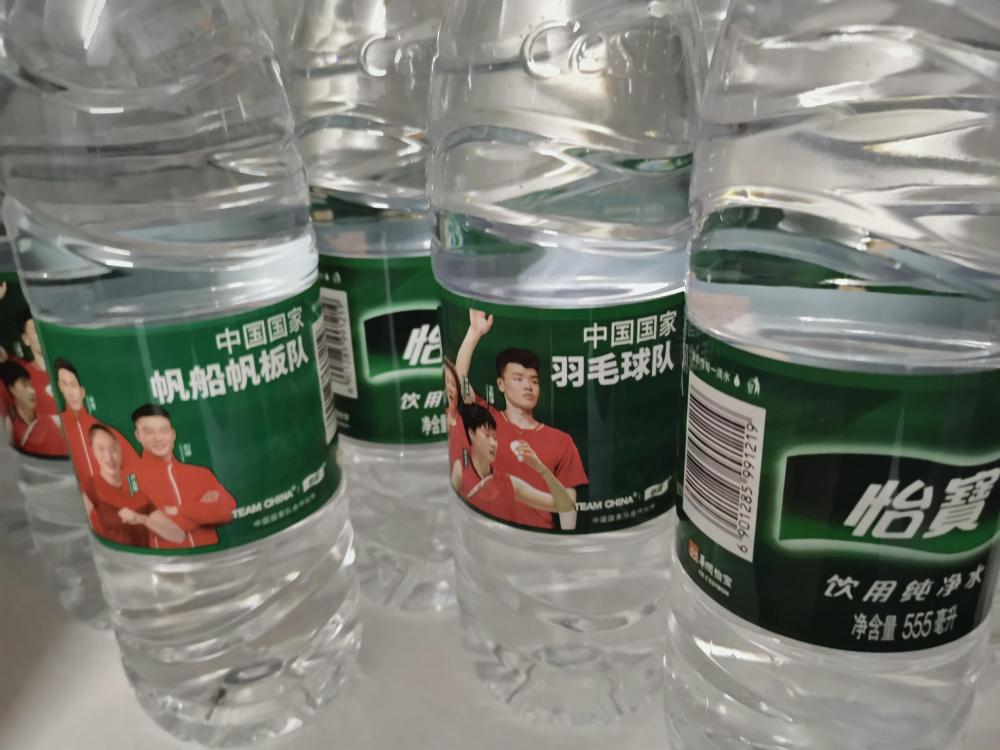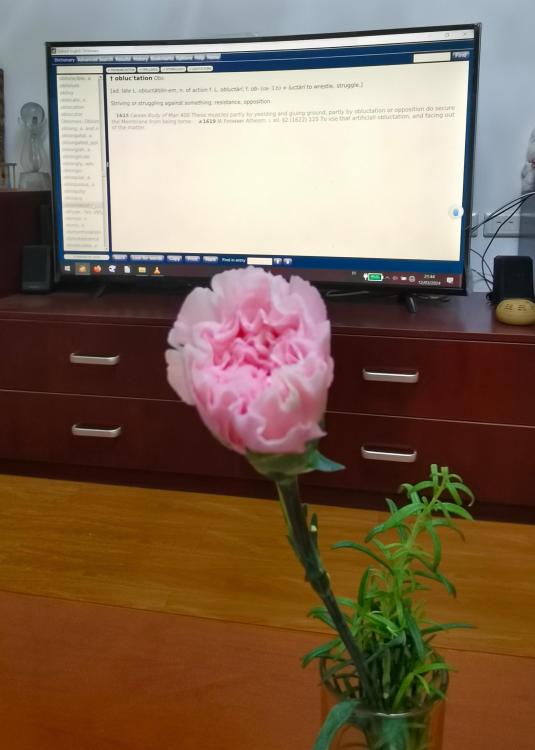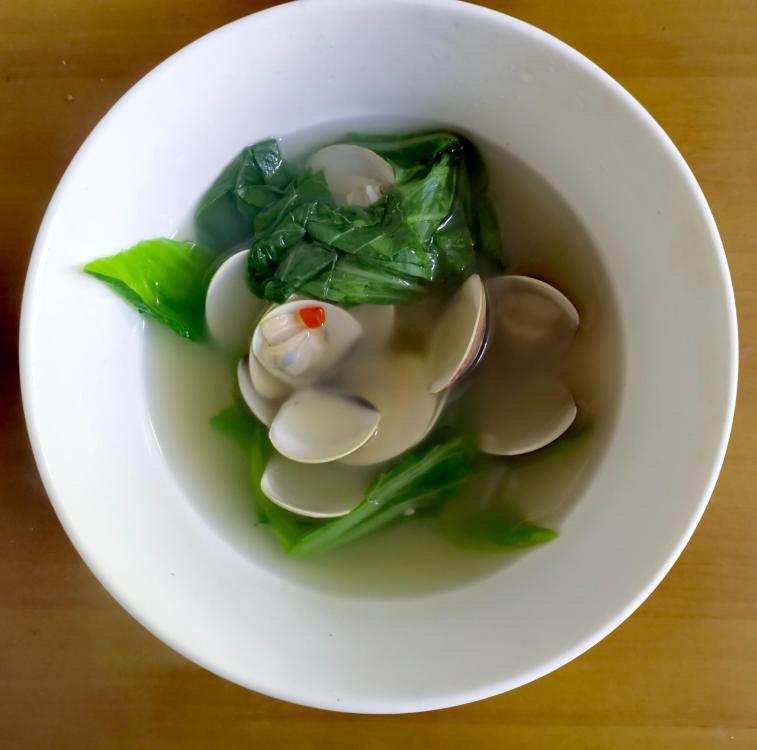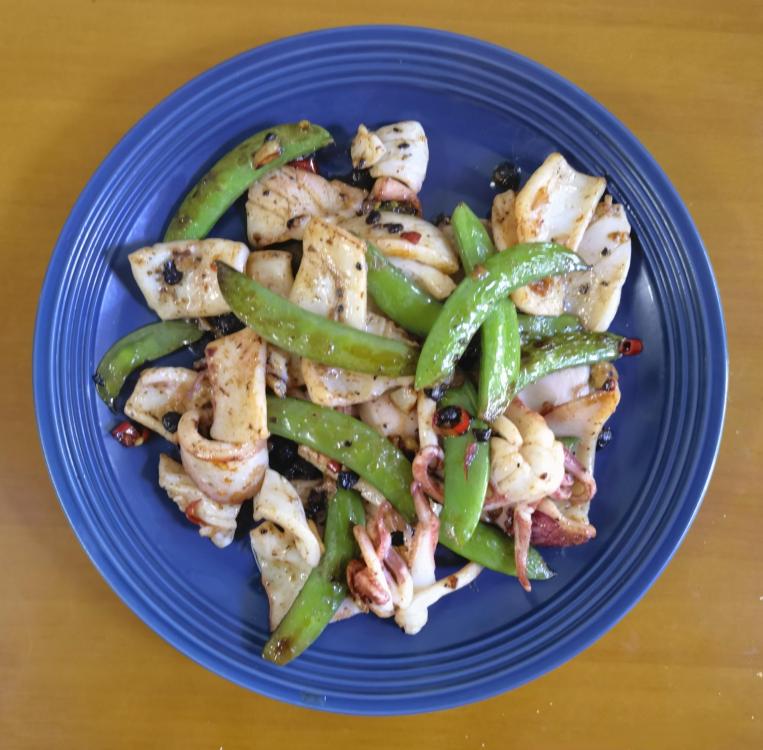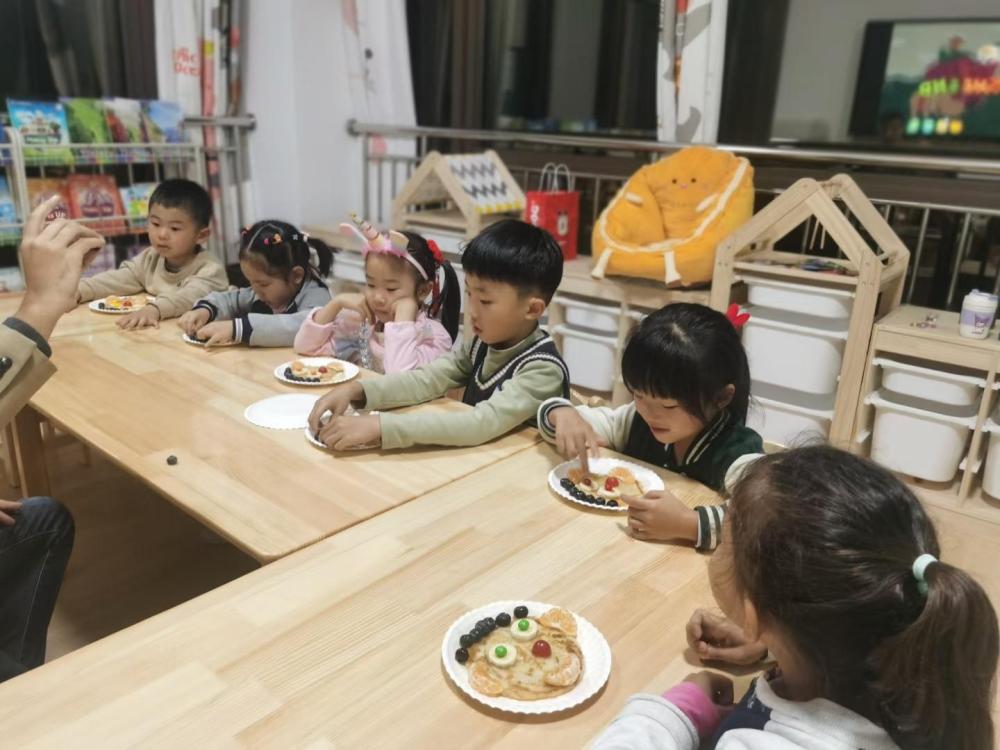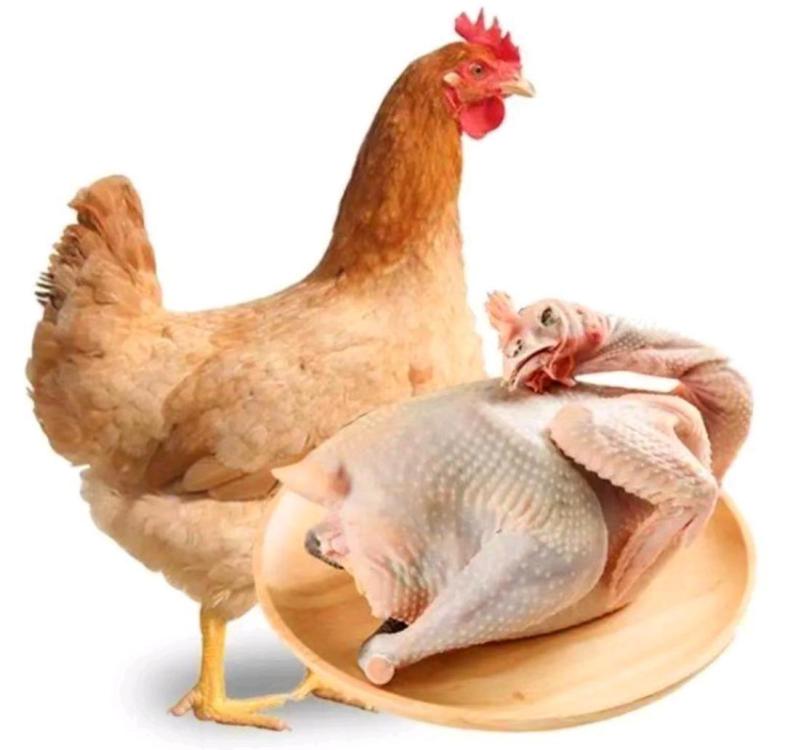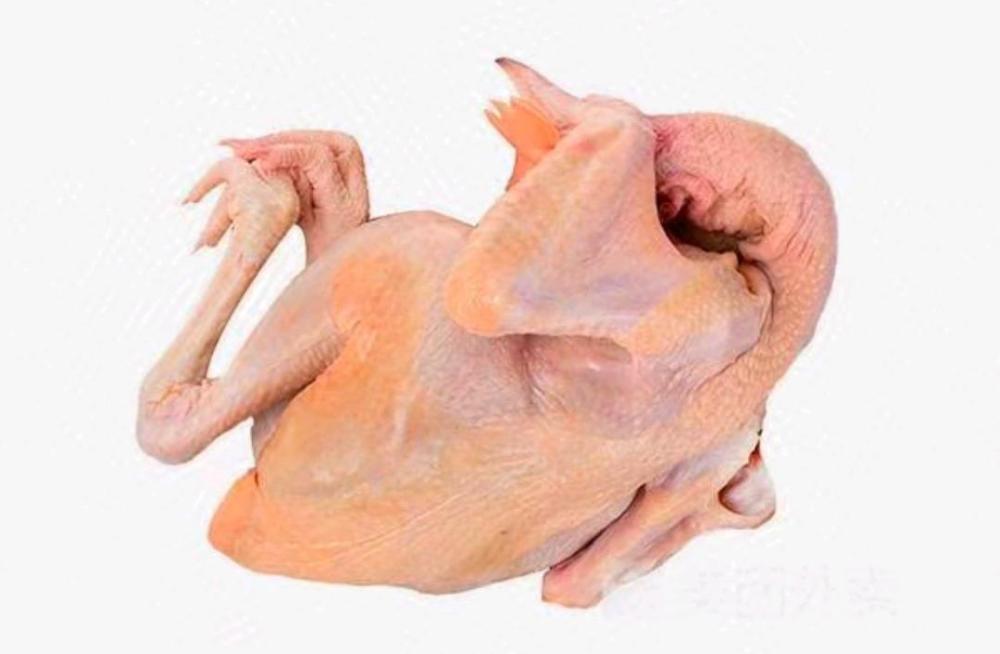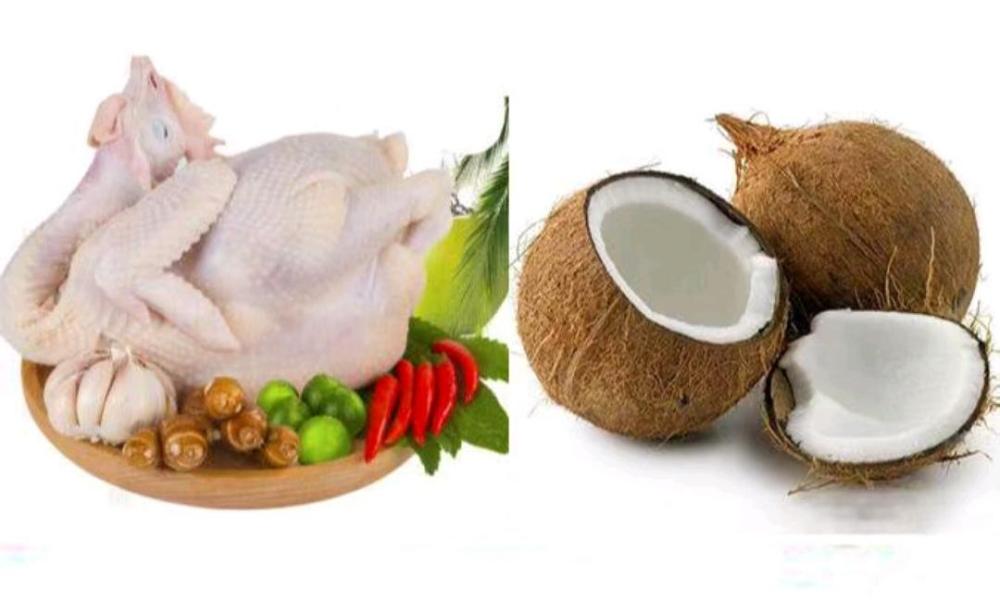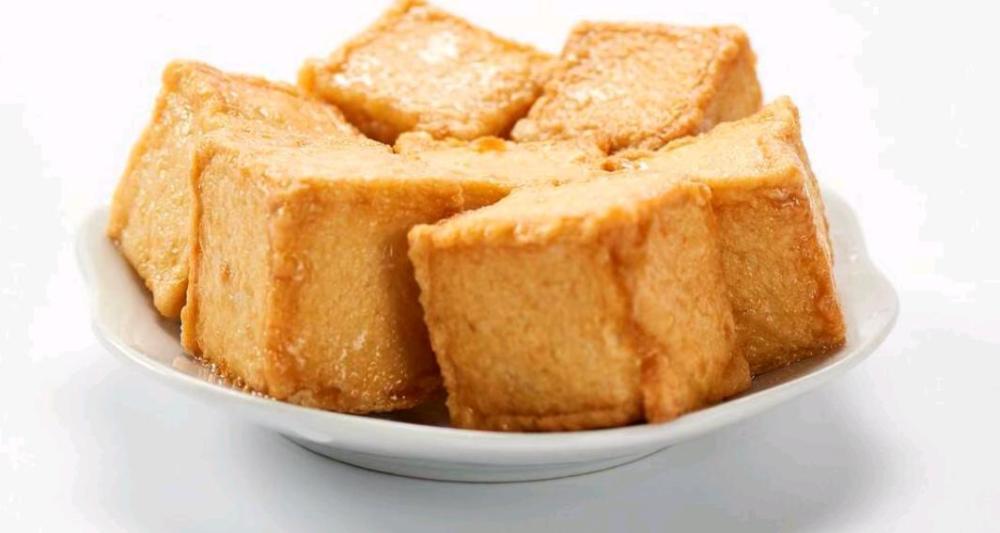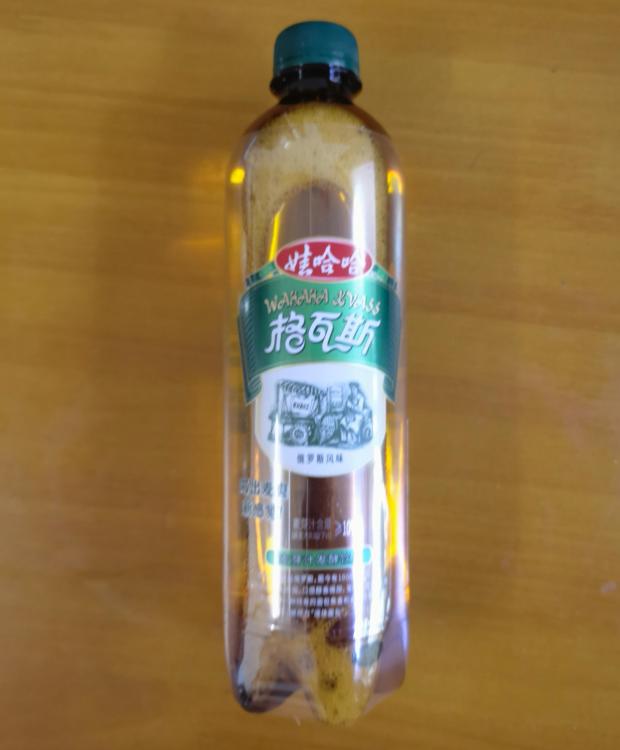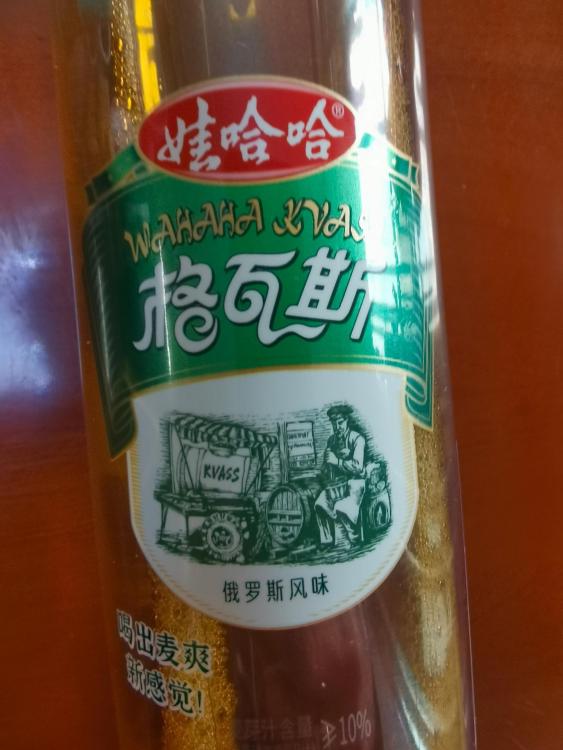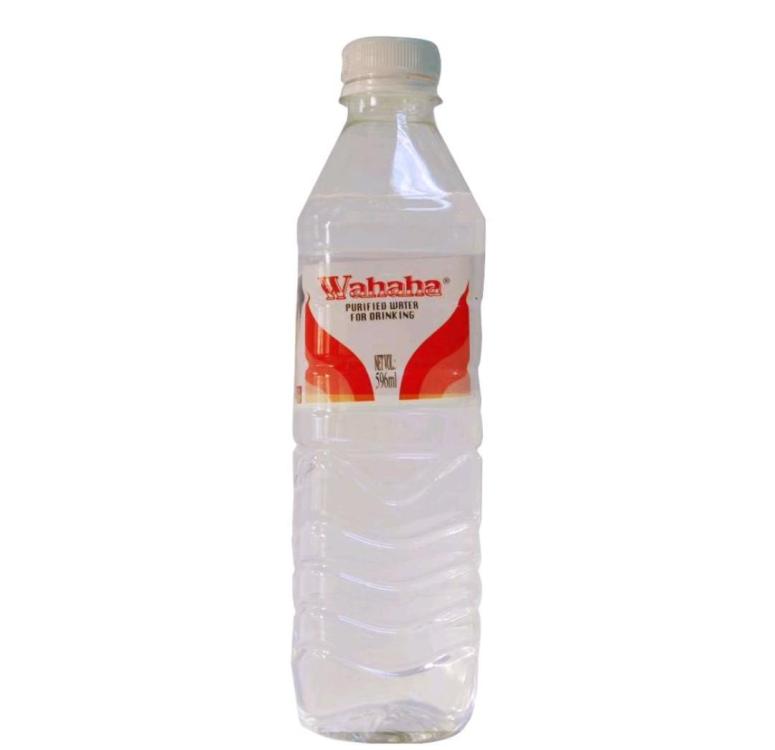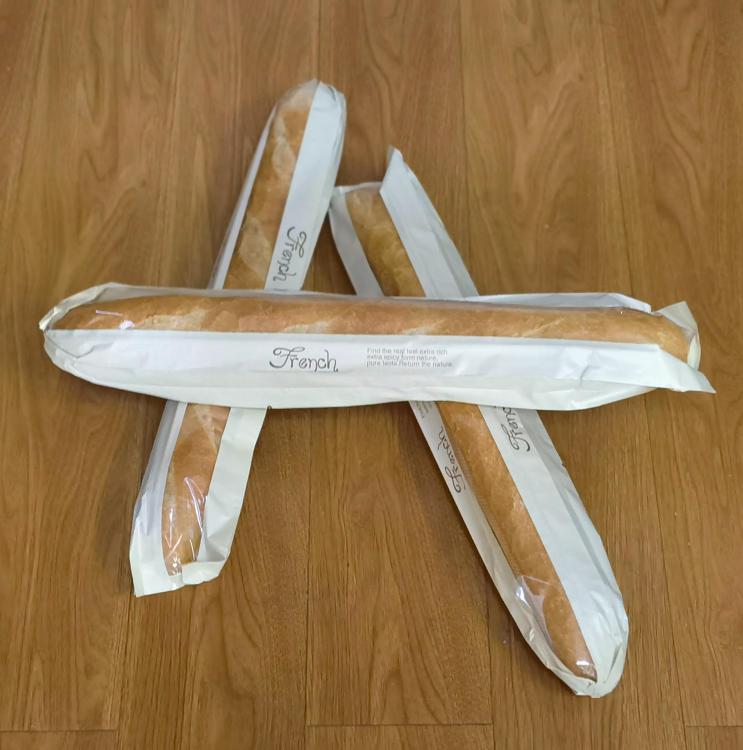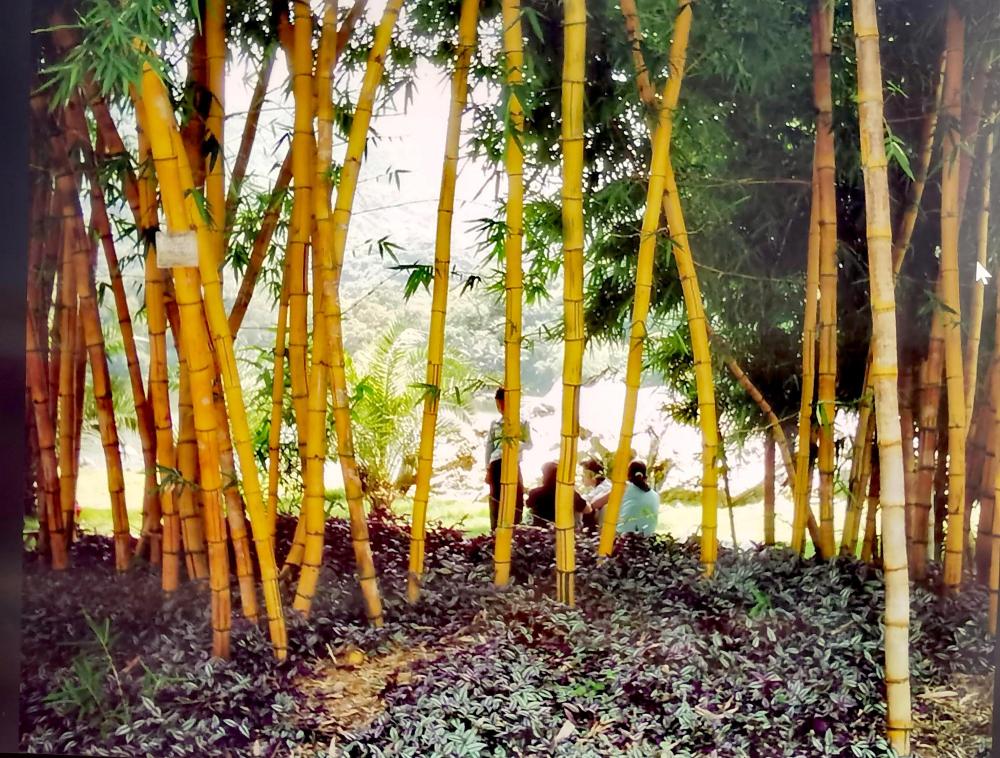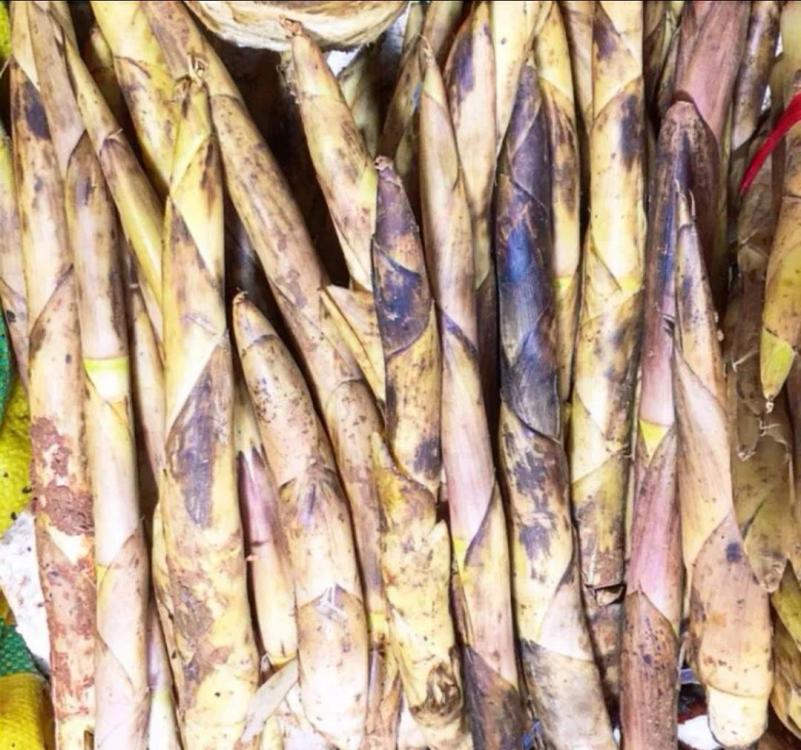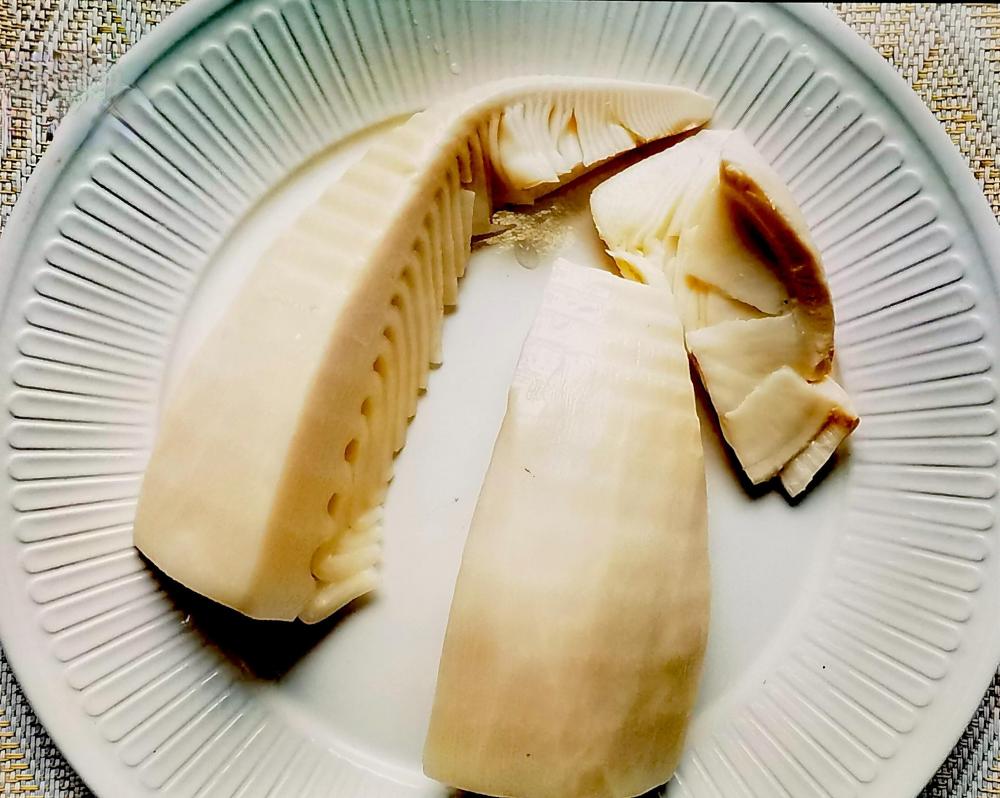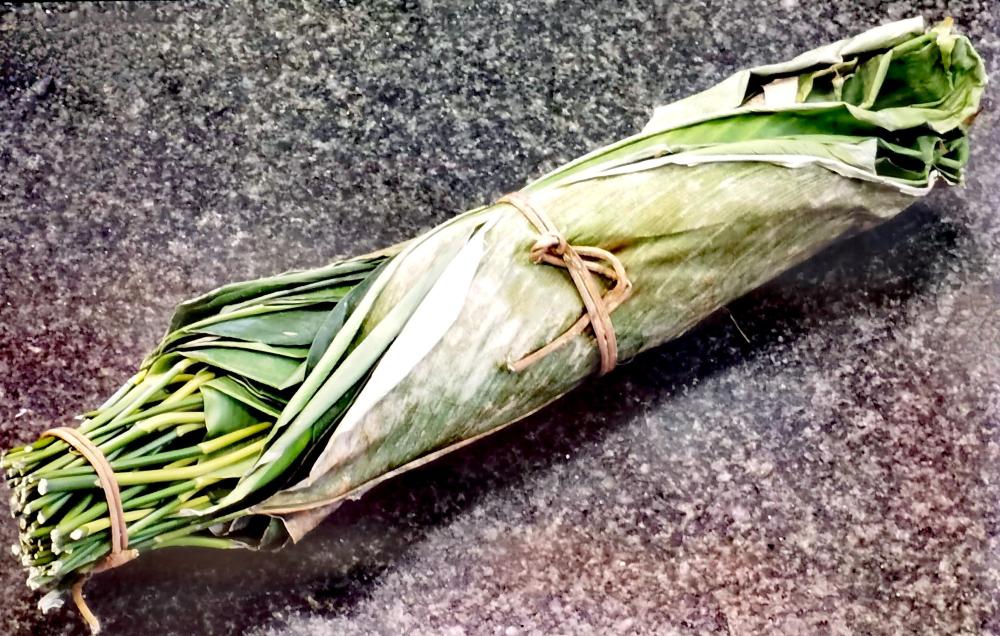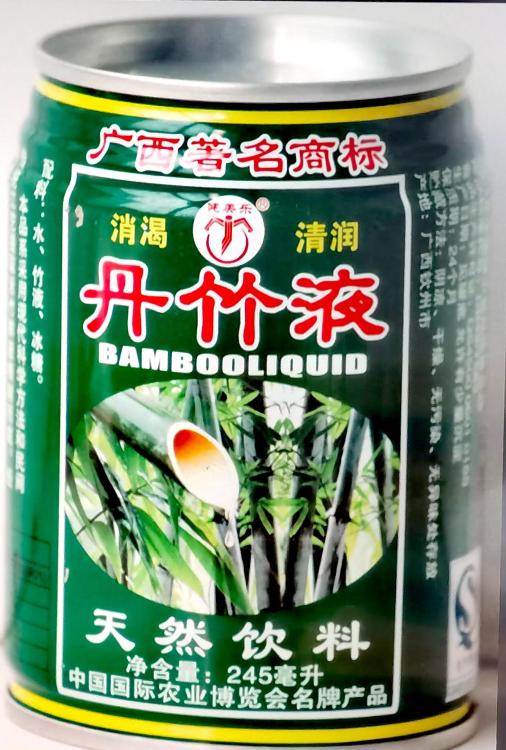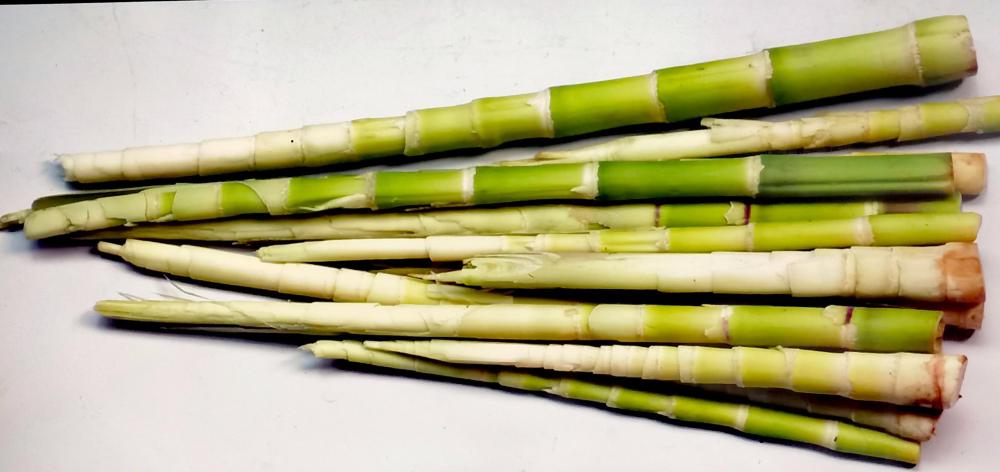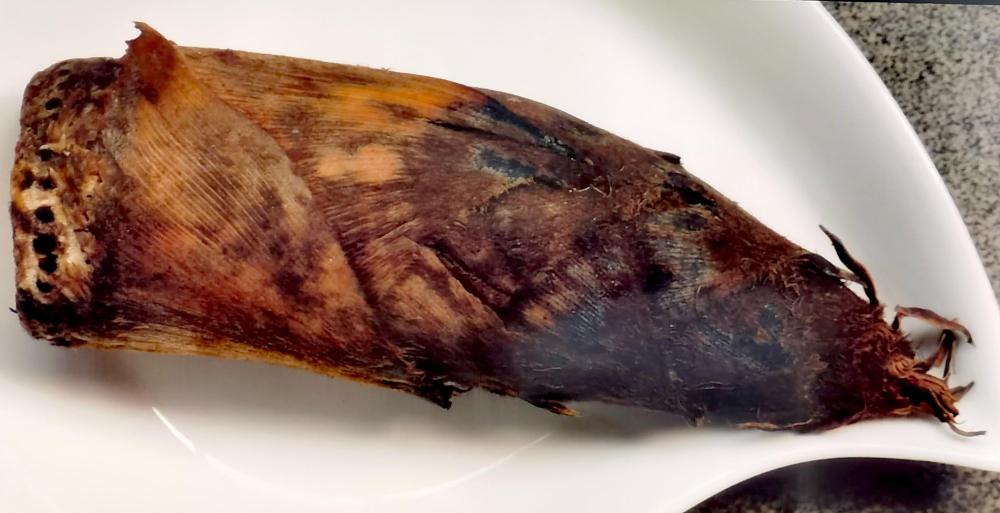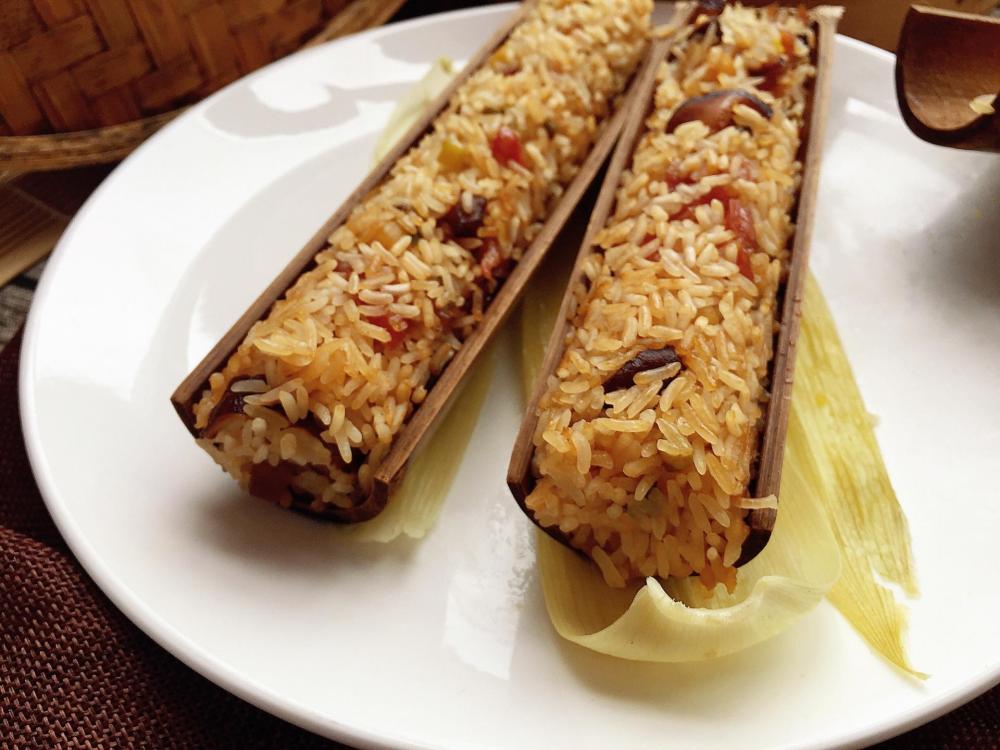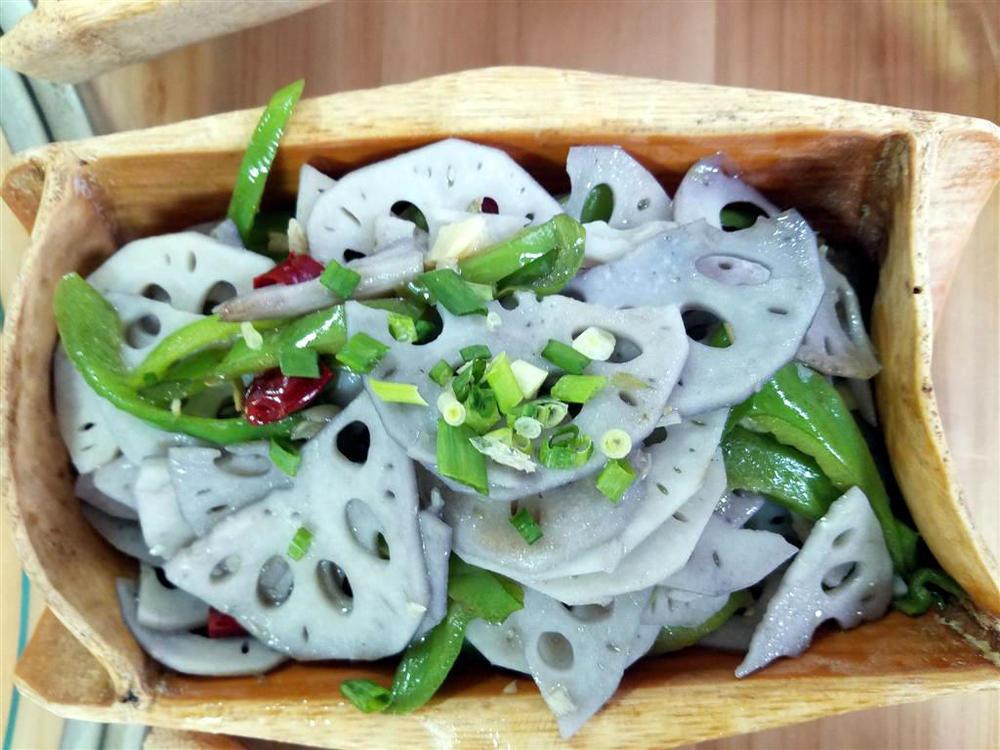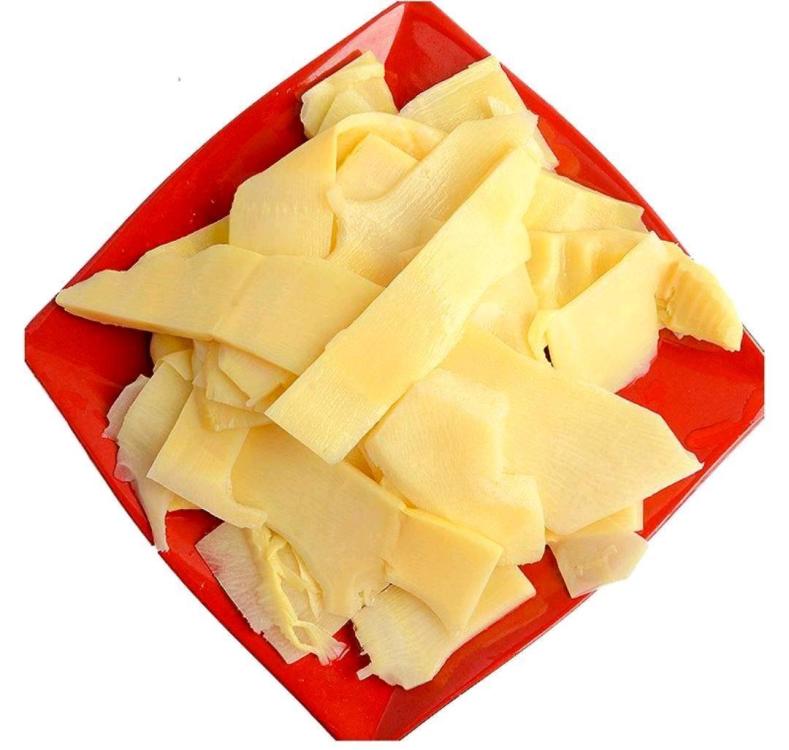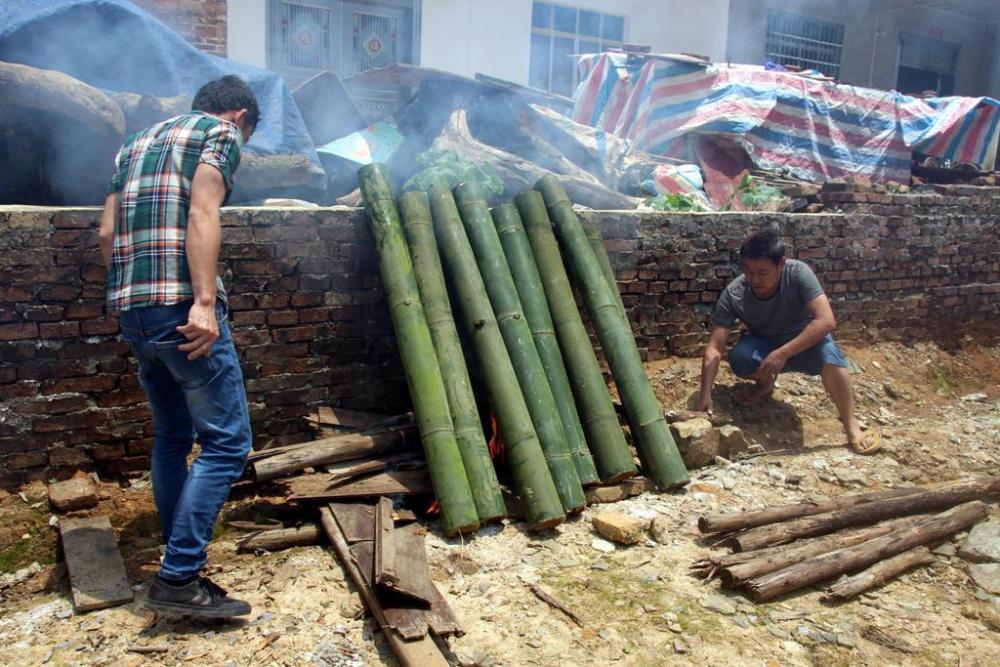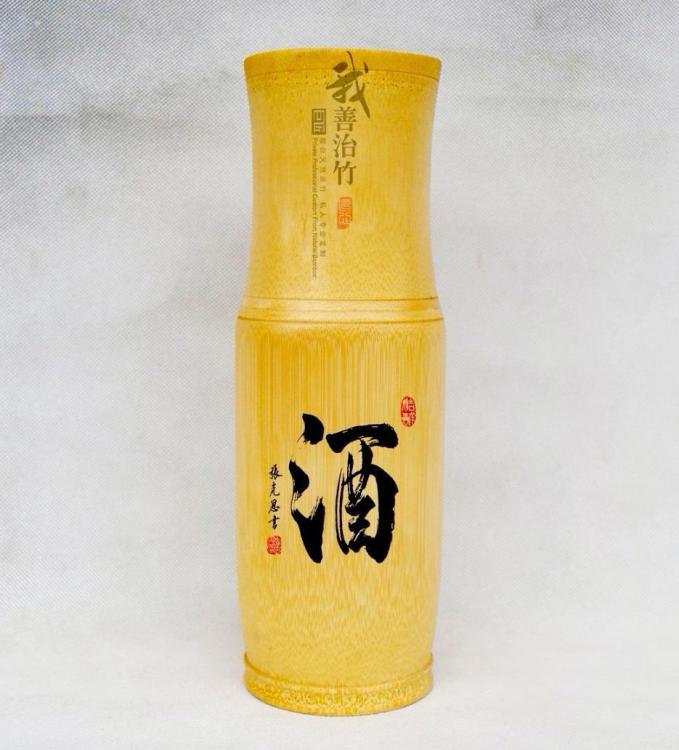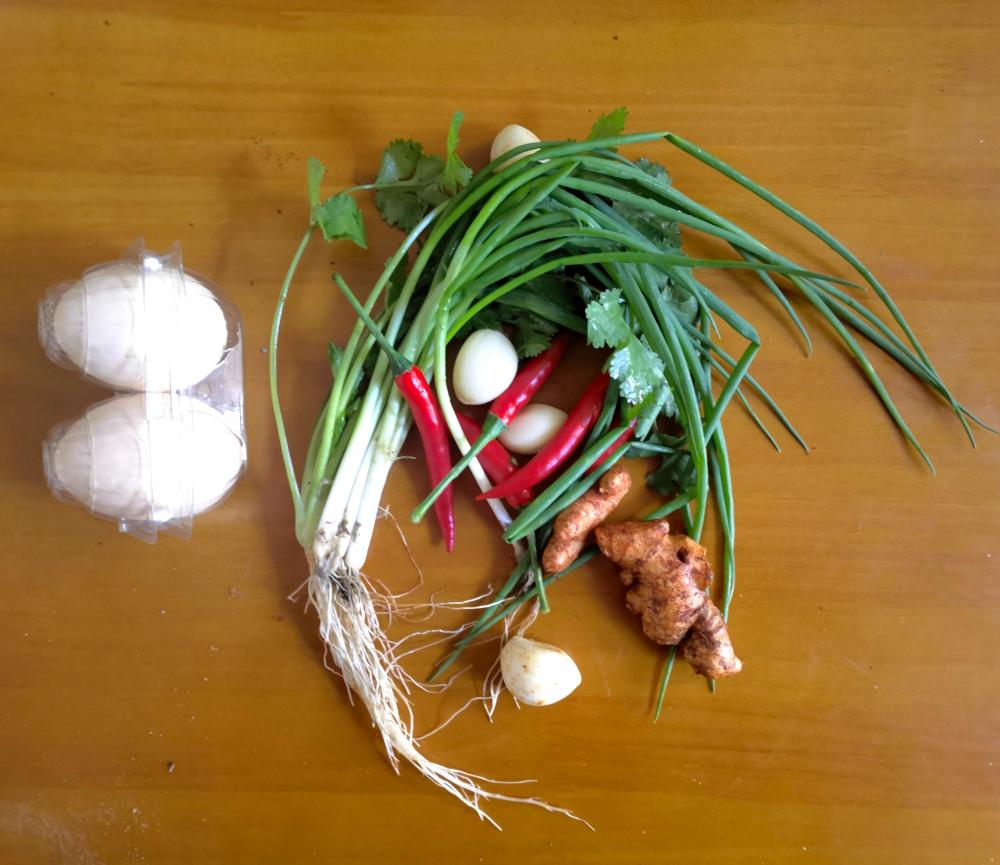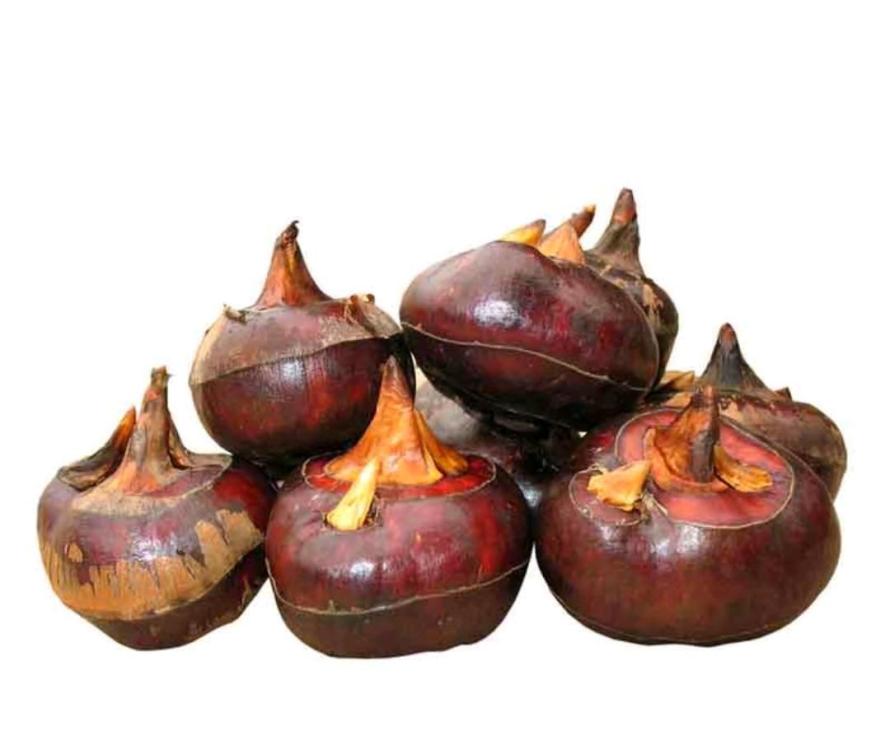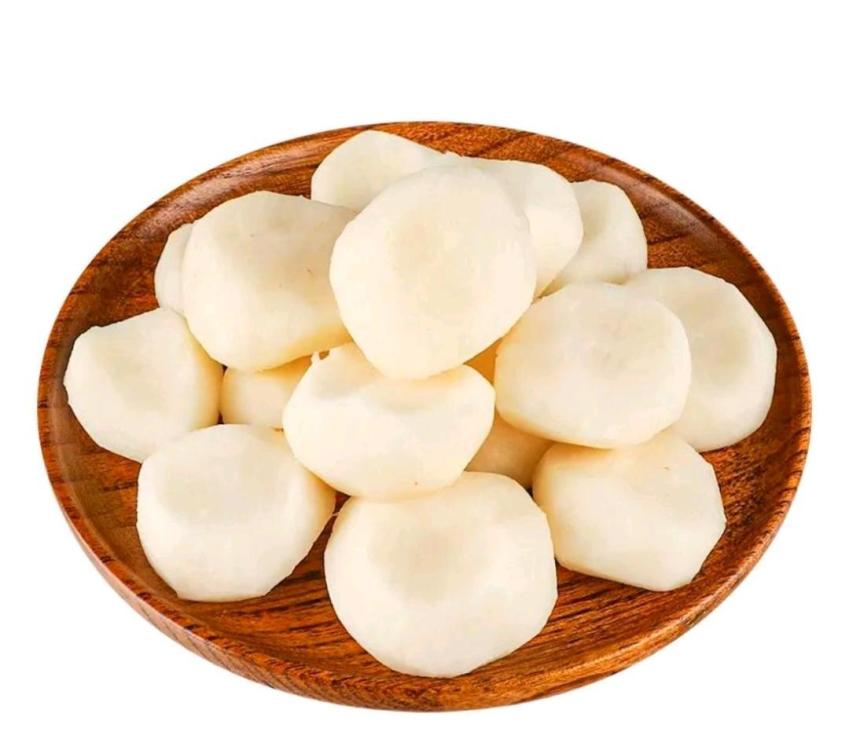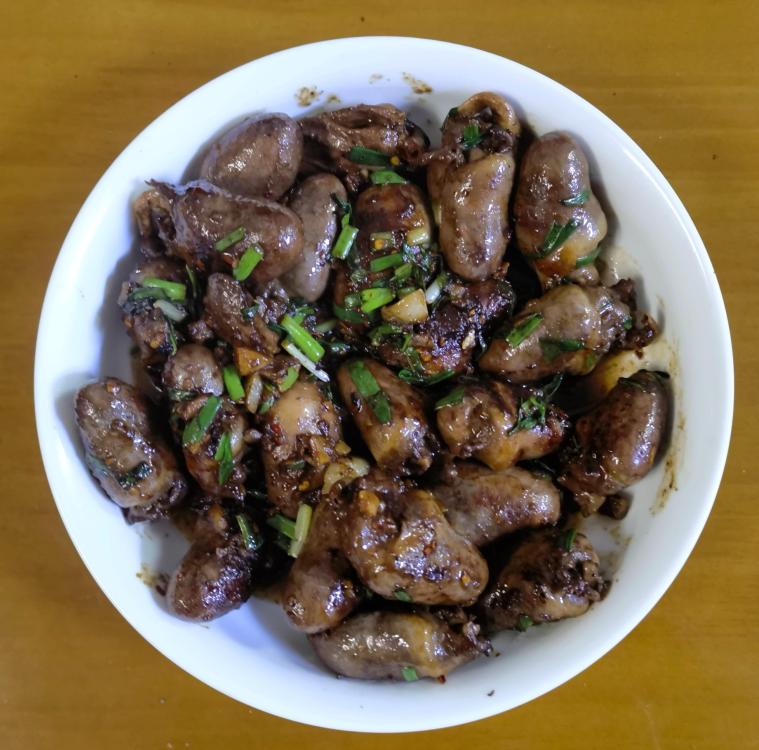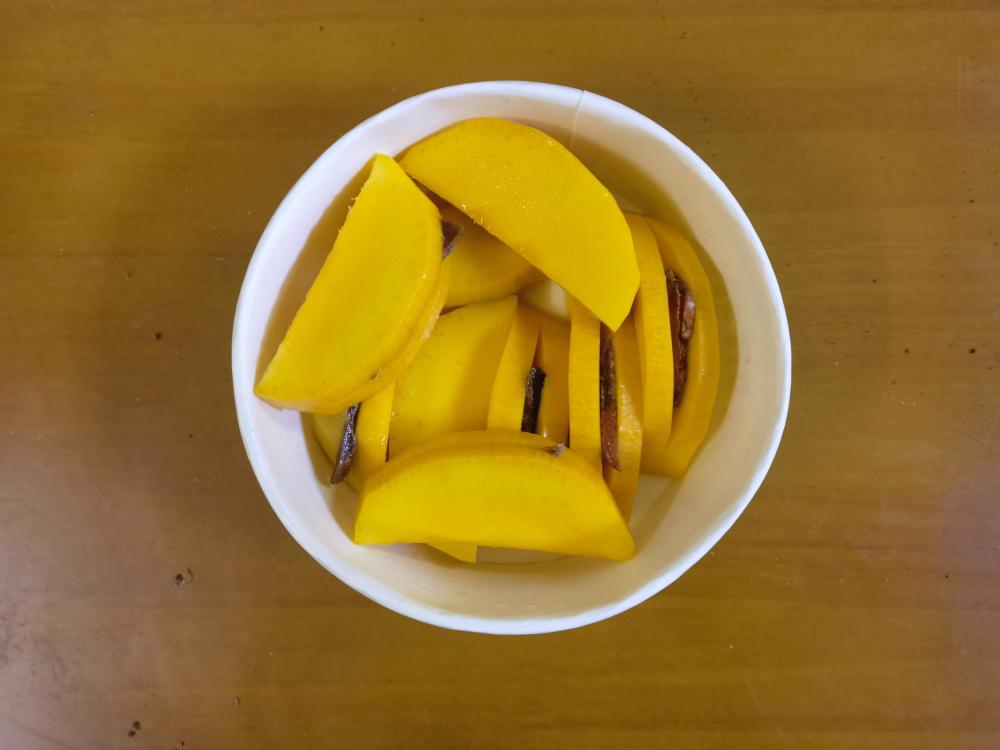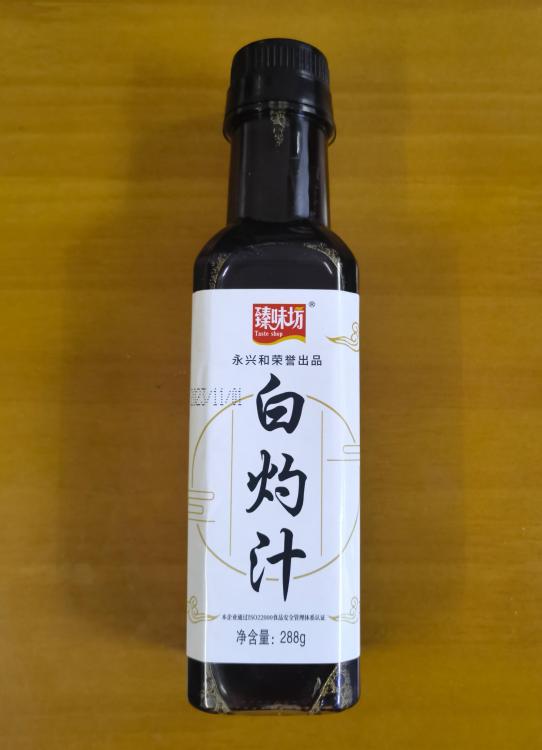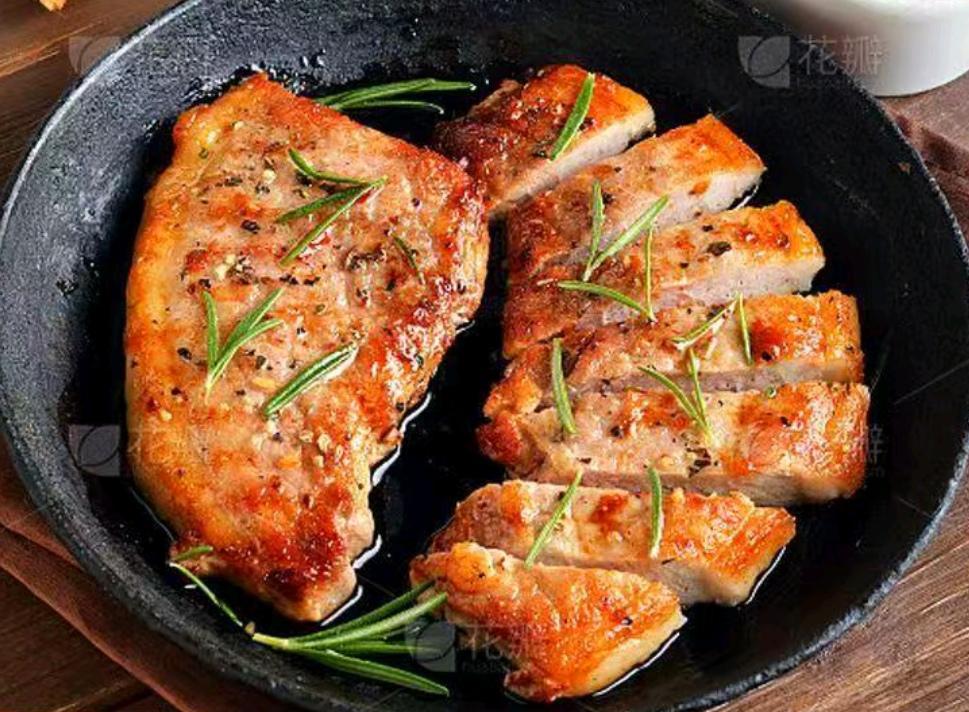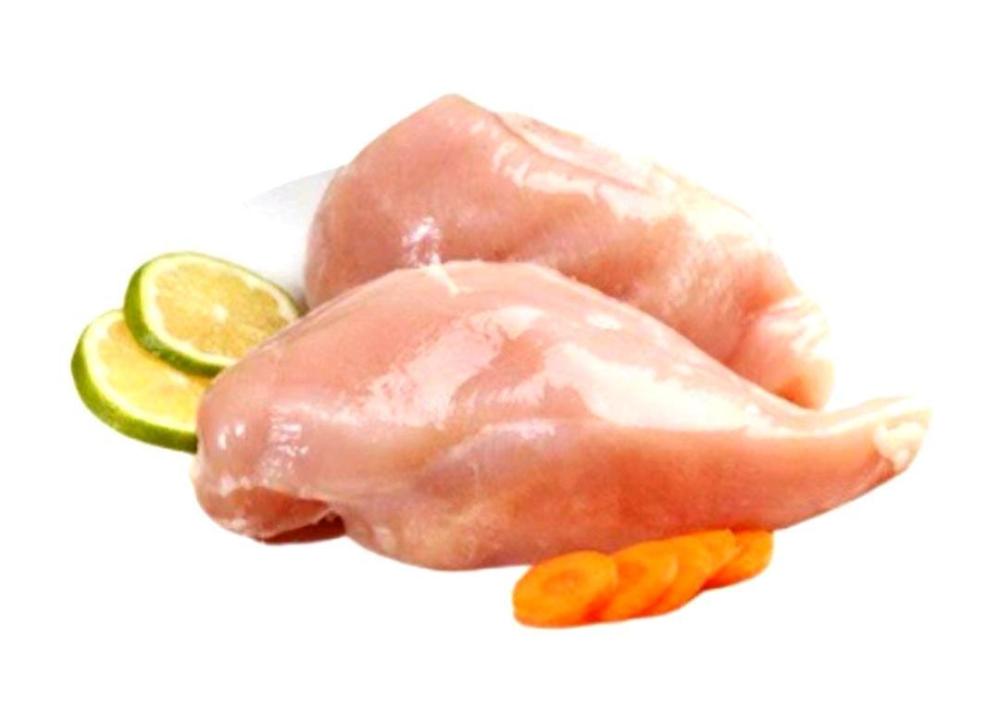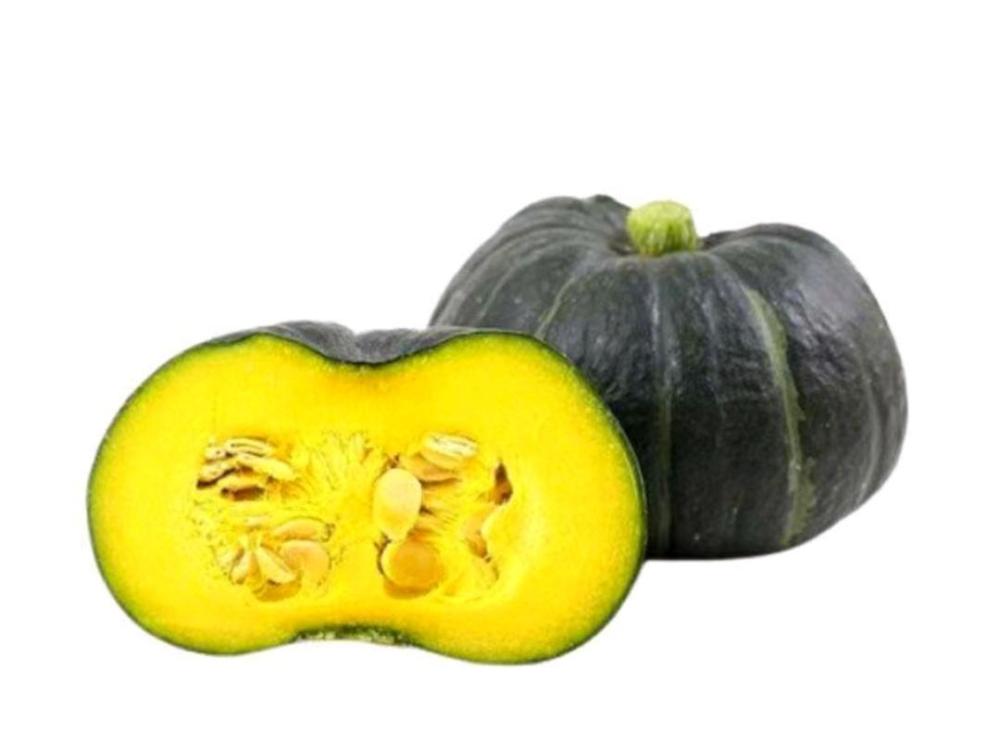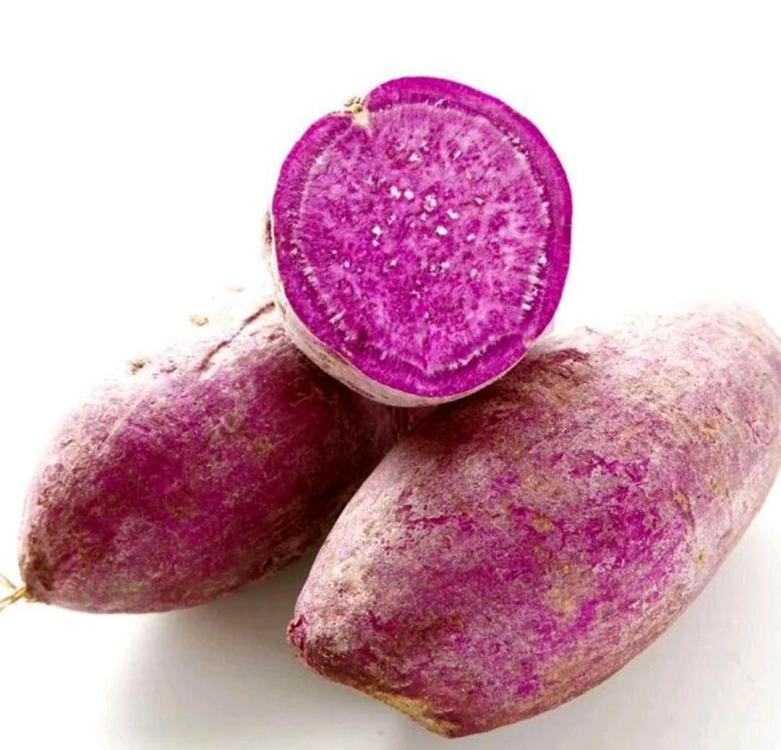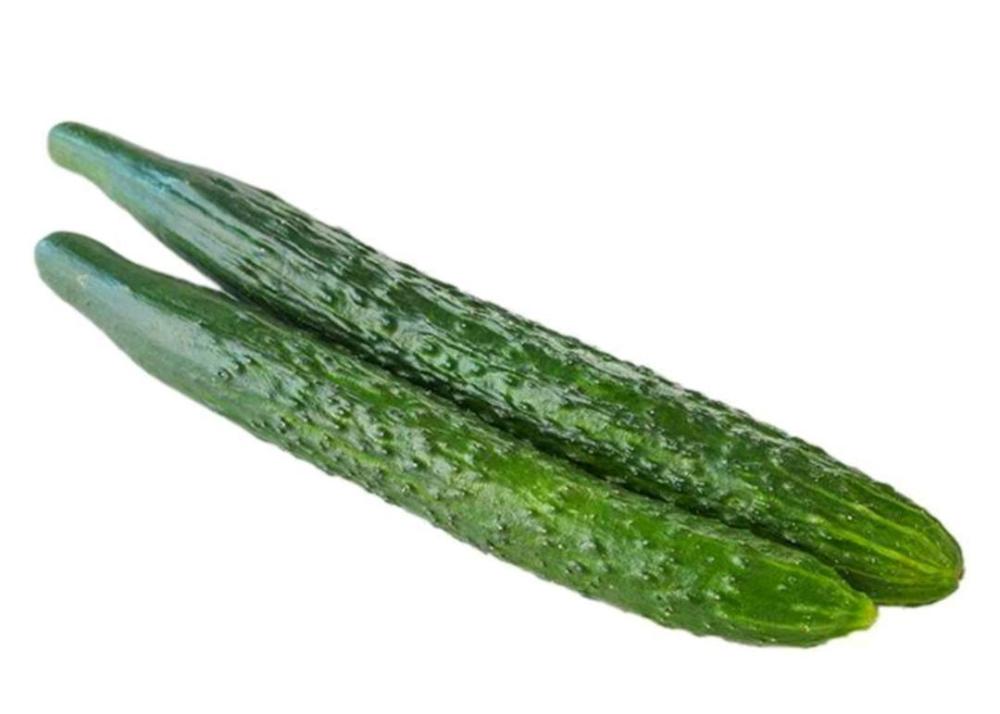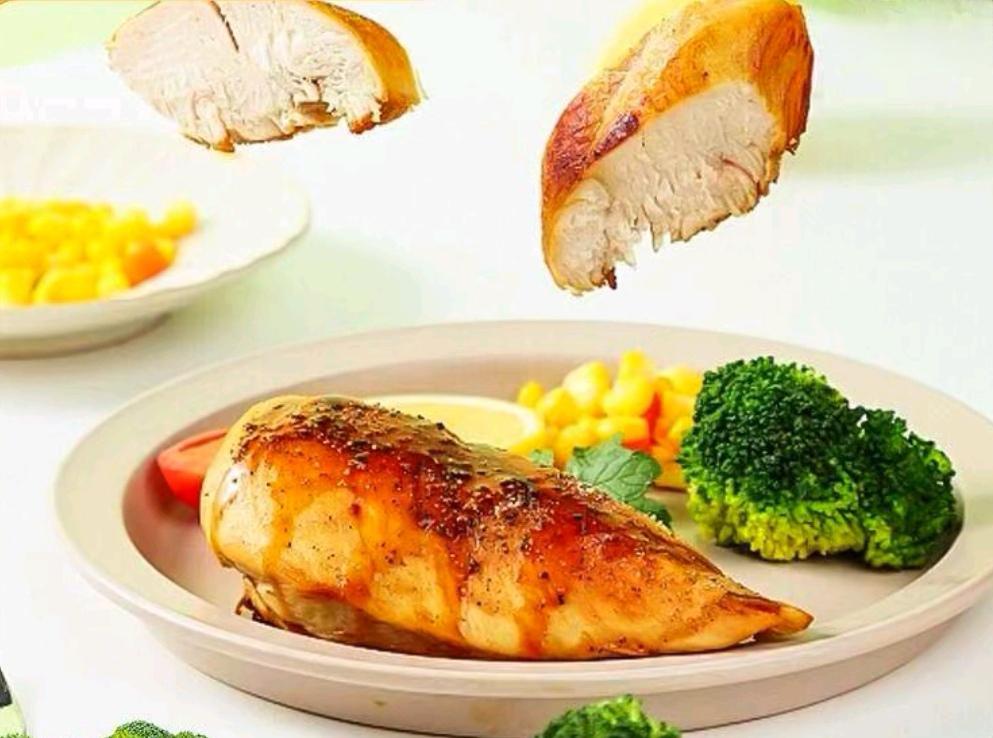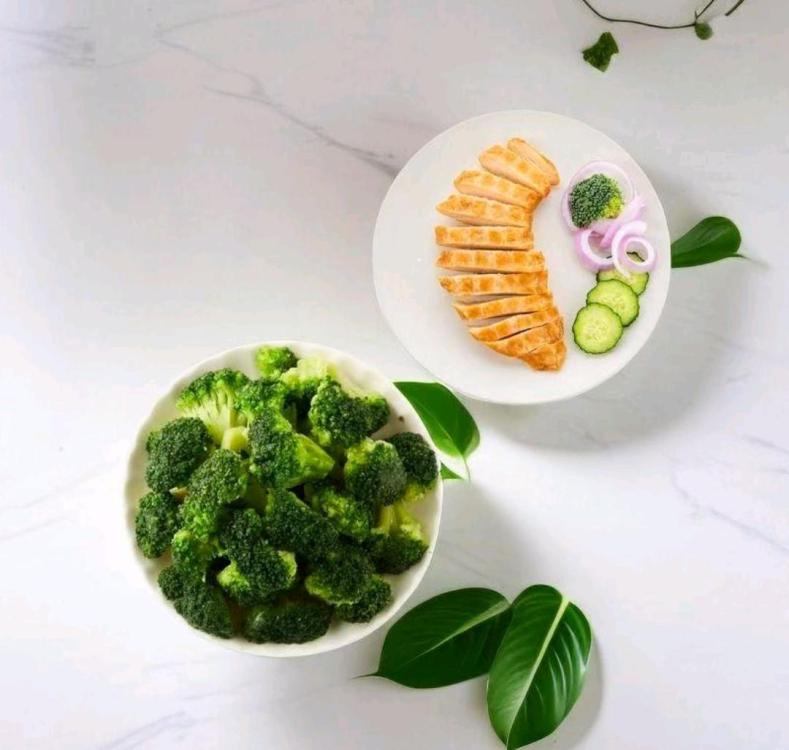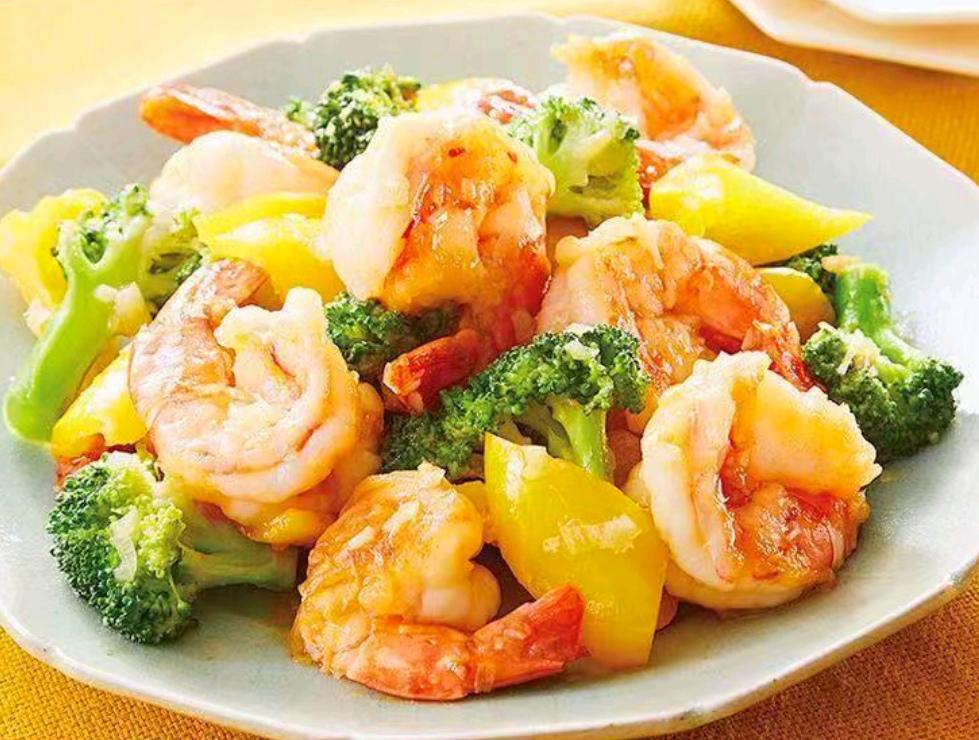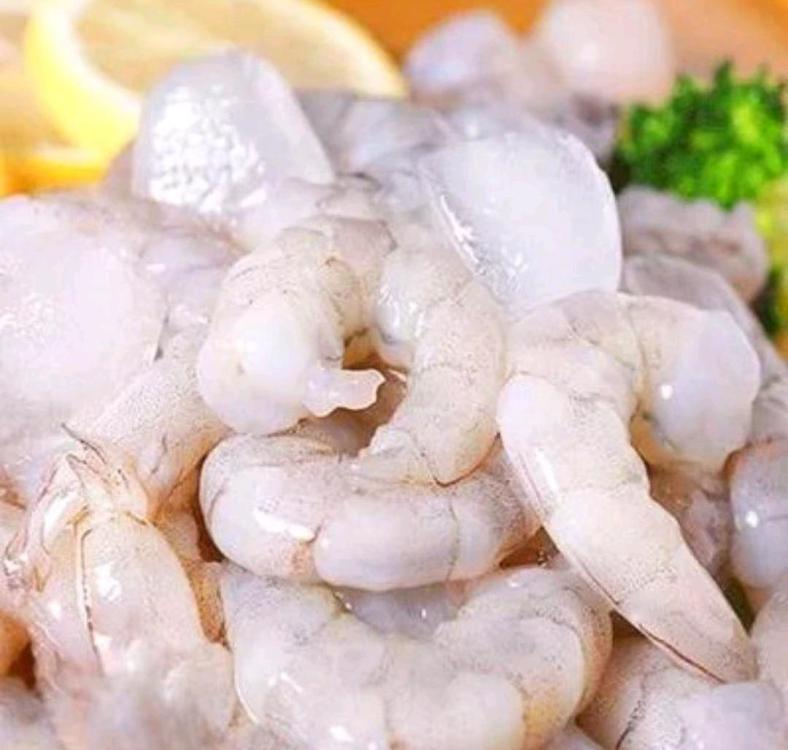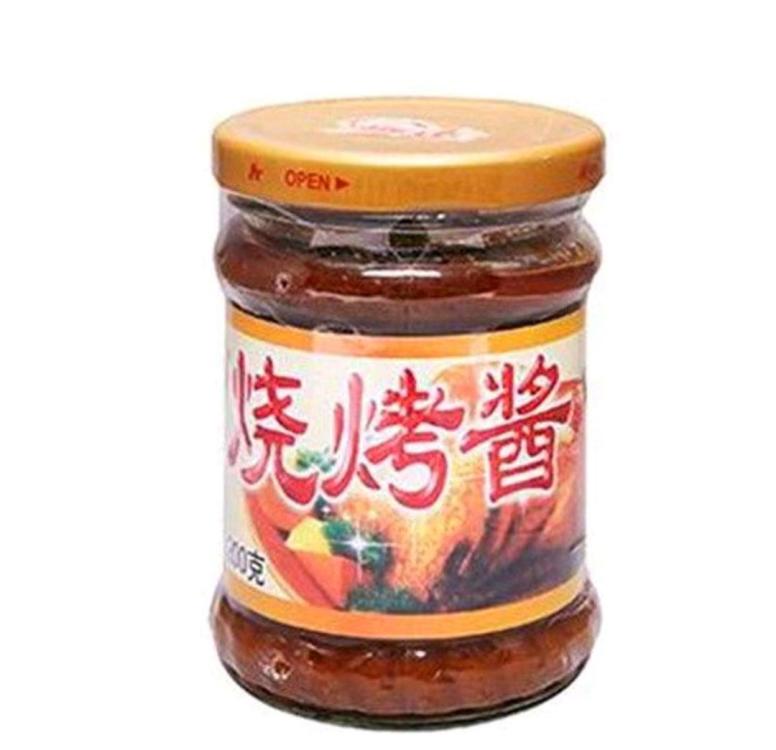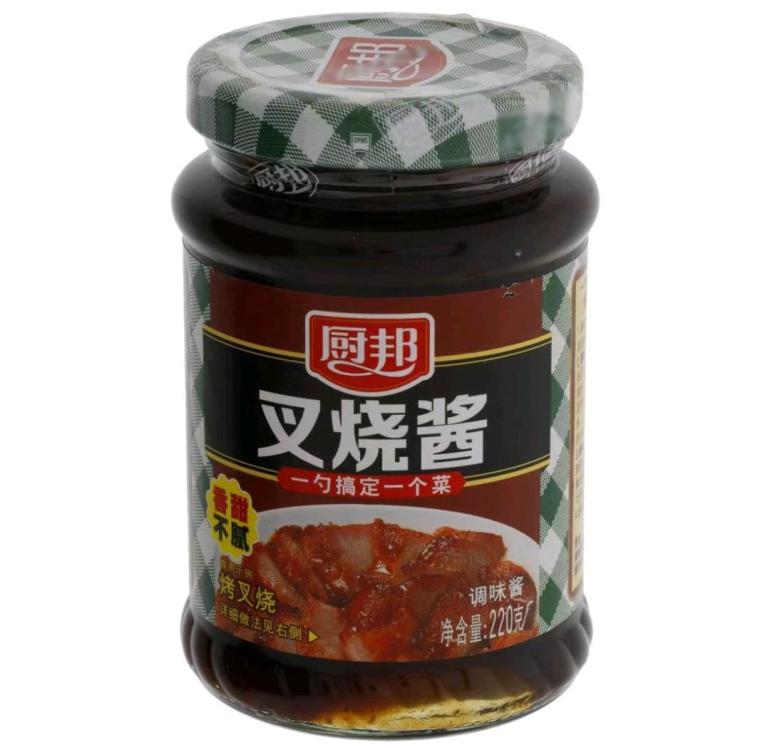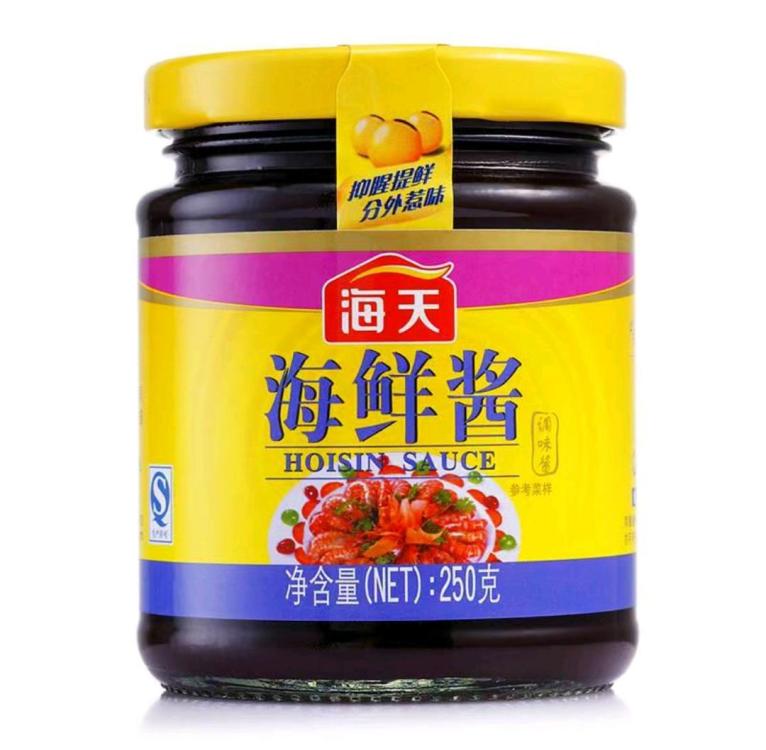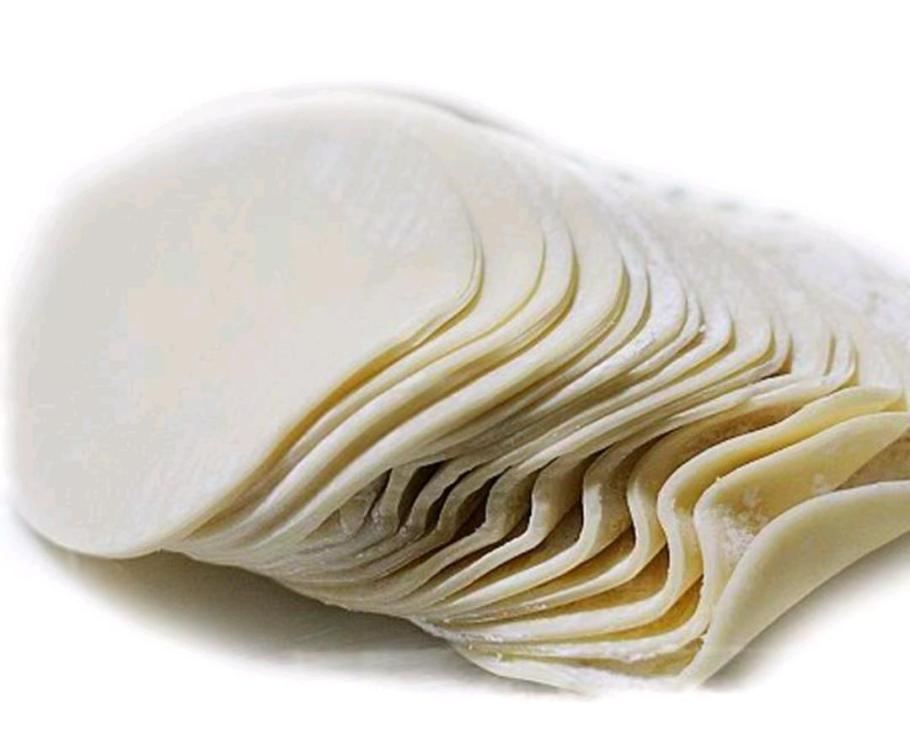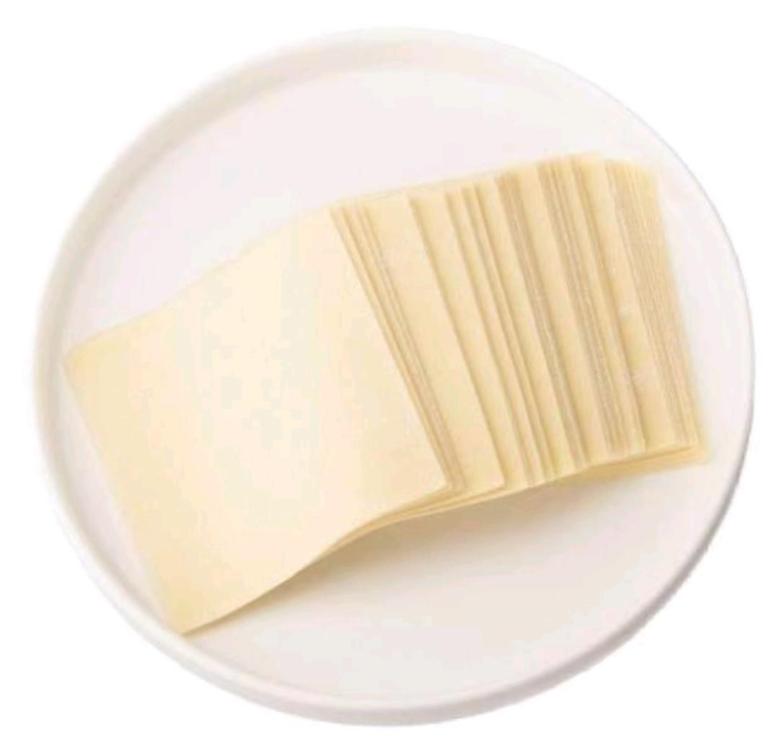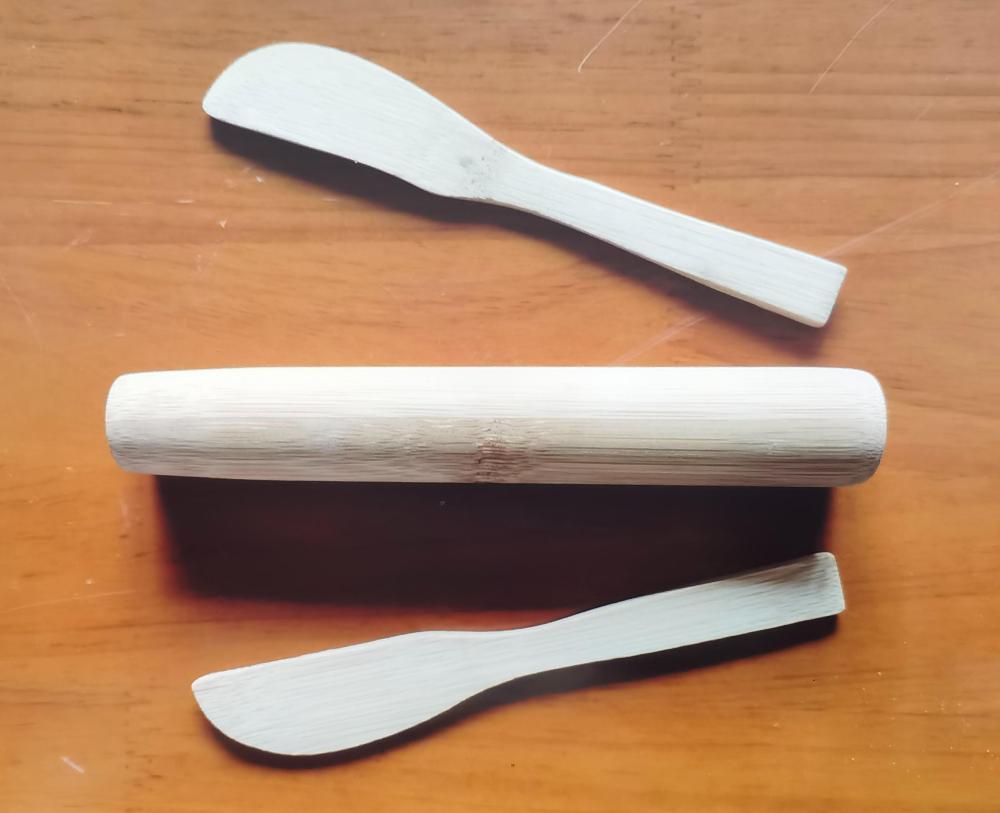-
Posts
16,739 -
Joined
-
Last visited
Content Type
Profiles
Forums
Store
Help Articles
Everything posted by liuzhou
-
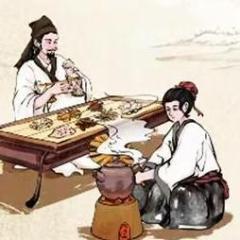
A pictorial guide to Chinese cooking ingredients
liuzhou replied to a topic in China: Cooking & Baking
The Chinese shopper takes their Gallus domesticus seriously. You don't just run out and pick up a tasteless, factory-raised, environmentally suspect, frozen, cheap protein. Buying a chicken is, for many people a labour of love. Markets have the birds live and the shopper will probe, poke and prod the tethered specimens on display in search of the one that most meets their high standards, then go home toting their flapping, shackled choice. (The vendor will despatch and de-feather it if you insist but few do.) The shoppers are also cognisant of the various breeds on offer and which are best for which dish. I mentioned the highly desirable 文昌鸡 (Wenchang chicken) in the last post here. There are others. S: 三黄鸡; T; 三黃雞 (sān huáng jī), 'three yellows chicken' is a breed from the east of China, now raised everywhere. Almost all are raised organically. S:土鸡; T: 土雞 (tǔ jī) are free-range chickens of which 3-yellow is the main breed. The name refers to them having yellowish plumage (羽毛 - yǔ máo), yellow beaks (嘴 - zuǐ), and yellow feet (S:脚; T: 腳 (jiǎo). Three yellows chicken Three yellows chicken By far the most common dish using these and other chickens are simple but deeply flavoursome soups. However, these are most often made with S: 老母鸡; T: 老母雞 (lǎo mǔ jī), old (layer) hens. These birds are between 2 and 4 years old. Most supermarkets' chickens' life span is mere months. Or even weeks. S: 老母鸡煲汤; T: 老母雞煲湯 (lǎo mǔ jī bāo tāng), long-simmered old hen soup is very simple, containing only the bird with Shaoxing wine, garlic, ginger, scallion and salt as its base. Considered medicinal, jujube, going berries, dried mushrooms, ginseng and astralagus, a TCM herb, may be added. Old hen (老母鸡) Another favourite medicinal soup bird is the flightless silkie - Gallus domesticus Brisson. Although most chickens are pretty hopeless at flying, the silkie can't fly at all; it has the wrong kind of feathers. Most silkies are white feathered but black inside: black bones and flesh. They are are high in carnitine which has a reputation for being an anti-aging agent as well as a supplement for athletes. There is zero evidence for this. In Chinese, they have various names, the most common being S: 乌骨鸡; T: 烏骨雞 (wū gǔ jī), black-boned chicken or simply S: 乌鸡; T: 烏雞 (wū jī), black chicken. There is little meat on these, but they make very good stock. Very flavourful. For Chinese people, the soup is the equivalent of 'Jewish penicillin'. Supermarket tend to not to have much in the way of whole birds but have all their constituent parts and I mean all. There are other breeds, some highly localised. I'll get to those sometime soon. -
I think I can squeeze this in here. I ordered a case of 24 bottles x 555ml of drinking water. Plus 250g of pistachios. For some reason they included something they've never done before in the four years I've been ordering my water from the same supplier. A flower to decorate my dinner table. For the first time in decades, I eat with a floral centrepiece on my table.
- 667 replies
-
- 11
-

-
Clam and mustard greens soup. I added some newly acquired Chaoshan fish sauce to the chicken broth. Made a big difference to the umami levels. Squid with sugar snap peas, garlic, ginger, chilli, fermented black beans, soy sauce, Shaoxing wine. There was rice cooked in chicken stock, too.
-
School wasn't like this in my day. We boys never had cooking lessons in primary school; girls had lessons from the age of 13 or 14. This looks like fun. Pancake faces.
-

A pictorial guide to Chinese cooking ingredients
liuzhou replied to a topic in China: Cooking & Baking
Hainan, 海南 (hǎi nán) is China's tropical island province in the south opposite?the coasts of Guangxi and Guangdong. This is where much of my fruit is grown but is also a major tourist destination for its beaches, especially those in Sanya, a city on its southern tip. But it is to the east of S: 海南岛; T: 海南島 (hǎi nán dǎo), Hainan Island and the city of 文昌 (wén chāng) that we are looking at here. Wenchang is home to what Saveur called the world's best chicken. These birds are raised on a diet of banyan seeds for nine months, before being held away from light and fattened on cakes made from peanut bran, shredded coconut meat, caltrops, cooked rice etc. The skin of the Wenchang chicken is thin and yellow, whereas the meat is white and tender. It was these chickens, taken to Singapore by Hainan merchants in the early 1900s, which inspired the Singaporean dish, Hainanese Chicken Rice, although Wenchang birds are rarely actually used there now - too expensive. A Wenchang chicken costs me over 100元 / $14, which is more than double the cost of a regular organic chicken. In Hainan itself, they are used in chicken dishes of all sorts, but are almost always poached. A favourite dish is Wenchang Coconut Chicken in which the birds are poached with coconut, garlic, sand ginger, green loquat and 'facing heaven' chillies and served with rice. My food delivery people will send me half a chicken and all the ingredients required in this dish for around 60元 / $8.36. Also, broth made from the chicken bones and scraps is mixed with coconut water to form the base of Hainan coconut hotpot, enjoyed all year round. Images from Meituan food delivery app listings. -

A pictorial guide to Chinese cooking ingredients
liuzhou replied to a topic in China: Cooking & Baking
Searching for information on this gets frustrating. S: 鱼豆腐; T: 魚豆腐 (yú dòu fu) means 'fish tofu'. Searching with or without the quotation marks returns many dishes of fish and tofu together. Not necessarily a bad thing: S: 鱼头豆腐汤; T: 鱼頭豆腐湯 (yú tóu dòu fu tāng), fish head and tofu soup is one of my favourite Chinese soups. You also get fake fish made from tofu for vegetarians, vegans and vagrants. No. What I'm looking at today is fake tofu made from fish. This is occasionally available in supermarkets and used in hot pots, soups, stir fries etc. Fish tofu can also be made at home. This recipe is Korean but it's the same as the Chinese version and is the best recipe I've found. https://msshiandmrhe.com/fish-tofu/ -
The largest beverage company in China and therefore one of the largest in the world is the ridiculously named 娃哈哈 (wá hā hā, literally 'baby haha'), founded in 1987 by Zong Qinghou (宗庆后) with three employees and a $20,000 USD loan (140,000元). They sell everything drinkable except hard liquor and now have around 30,000 employees. Their top seller is their purified water which I often buy. I was surprised to see today that they have launched their own kvass, which they call 格瓦斯 (gé wǎ sī) in an attempt to replicate the Russian квас phonetically. Unfortunately, the literal meaning of 格瓦斯 is 'standard gas', wǎ sī being an earlier attempt to replicate 'gas'. A linguistic mess. Apart from the wort*, which they don't give details of, it contains apple juice and 'grape syrup', sugar and a bunch of chemicals with long names, none of them necessary. What does it taste like? How the heck would I know? I lived in Russia in the latter years of the Soviet Union, where I drank it once and found it disgusting. Never again. * "A sweet liquid produced by steeping ground malt or other grain in hot water, which is then fermented to produce beer."
-

Chinese or Taiwanese Pastry/Baking Cookbook suggestions
liuzhou replied to a topic in China: Cooking & Baking
I have a couple of those moulds*. They are fascinating. I bought them even though I don't bake - just for the aesthetic appeal. *I'd show you them but they are still in "one of those boxes" after moving house in January! -
I'm always amazed how long cabbages last in the fridge. Longer than any other veg I can think of.
-
Nepal can only boast part of the world's tallest land mountain, whatever you call it. It straddles a border. And neither side of the border call it "Everest". As to chocolate and potentially moving to Tasmania, I'd say that is a good reason not to move there. Tasmanian Chocolate Tomatoes (yes, they're a thing) sound more promising.
-
I wouldn't panic. Most of the fruits we eat are human-enabled hybrids and have been for centuries. Nothing new.
- 1 reply
-
- 2
-

-

-
-

A pictorial guide to Chinese cooking ingredients
liuzhou replied to a topic in China: Cooking & Baking
竹子 (zhúzi) is a type of grass in the Poaceae family, in which there are around 1,700 species of the Bambusoideae sub-family. It is a beautiful plant and certainly one of the most useful. It is used to build houses, make clothes, make hats, make rafts, make musical instruments, make fish traps, for mats, as scaffolding and in the manufacture of fireworks. You can buy bamboo keyboard and mouse sets for your computer. It is used to make baskets of all sorts, chopsticks, serving bowls, strainers, storage boxes, cooking implements etc, etc. The list is almost endless. And we eat it. We eat a lot of it. Bamboo Not all those species are edible. In fact some are poisonous so don't go digging up the first you see unless you know what you're doing. S: 竹笋; T: 竹筍 (zhú sǔn), bamboo shoots are what we eat. They have to be gathered quickly when they appear as bamboo is the fastest growing plant on our planet and will soon be inedibly tough. Some species can grow up to one metre /three feet per day. S: 雷笋; T: 雷筍 (léi sǔn) is collected immediately following spring thunderstorms, the name literally meaning 'thunder shoot'. These are prized. Thunder bamboo Also described as S: 春笋; T: 春筍 (chūn sǔn), meaning 'spring bamboo shoots'. Peeled spring bamboo S: 冬笋; T: 冬筍 (dōng sǔn), winter bamboo is also gathered and consumed. It is sweet and crisp. Winter bamboo Sweet bamboo is often labelled S: 甜笋; T: 甜筍 (tián sǔn). Sweet bamboo Bamboo is often pickled and Liuzhou is famous for its S: 酸笋; T: 酸筍 (suān sǔn), fermented bamboo as used in its signature dish, luosifen. Pickled bamboo Another culinary use of bamboo is S: 竹筒饭; T: 竹筒飯 (zhú tǒng fàn), rice etc steamed in bamboo tubes. The bamboo adds a subtle flavour. I've also eaten chicken cooked in bamboo tubes over an open fire. Leaves from the plant are used to wrap 粽子 (zòng zi), glutinous rice and meat or nuts. I've seen them referred to as Chinese tamales. This 丹竹夜 (dān zhú yè), bamboo liquid makes a pleasant thirst quenching soft drink or you may prefer 竹酒 (zhú jiǔ), bamboo wine from a bamboo 'bottle'. I'm bamboozled.. -
I just took delivery of some seafood I ordered. Included was this The essentials for the Chinese kitchen. Garlic, ginger, chilli, Chinese chives and coriander leaf/cilantro. Plus two eggs. Unordered and uncharged-for.
- 667 replies
-
- 11
-

-

A pictorial guide to Chinese cooking ingredients
liuzhou replied to a topic in China: Cooking & Baking
Anyone eaten horse's hooves? If you've eaten Chinese you may have. Unfortunately, in the most of the west, they usually only come in cans and are a poor substitute for fresh hooves. S:马蹄; T: 馬蹄 (mǎ tí) means horse's hoof, but also refers to Eleocharis dulcis or E. congesta, which you probably know better as water chestnuts. The unpeeled tubers (corms) of the aquatic plant are said to resemble horse's hooves. Hmmm. Maybe. If you are able to source fresh hooves, you will know how crisp they are and that they have a mild but definite taste. Canned examples tend to be less crisp and are tasteless. The canned variety come either whole or sliced. The whole ones tend to be a bit crisper. Of course, texture is as important as taste in Chinese culinary thinking. I've never seen canned water chestnuts in a supermarket here (or any other canned vegetable, for that matter). In the wet markets, they are sold both unpeeled or the vendor will peel them for you - a lot easier if you are going use them today. Keeping peeled fresh in water in the fridge for a day or two is highly recommended. They are eaten raw or used in stir fries, in dumplings or in braised dishes. Trot on! -
I live within spitting distance of Vietnam and visit as often as possible. They'll ban me forever if I use bread hacked to pieces like that! I'm a purist when it comes to my bánh mì!
-
... order food delivery at the weekend. Many people run second jobs on weekends delivering food but they don't know the city so well as the regular drivers. It is painful to watch the tracking map on my phone and see them go in the wrong direction. Luckily, I didn't order ice cream today. It would have gone on a long tour of the city and would have evaporated long before it reached me.
-
Spicy braised duck hearts with garlic, chilli, Shaoxing wine and Chaoshan fish sauce. Umami and spice. Beer food. But without beer.
-
I saw these when looking for oranges and was intrigued. Fruit sandwiches. Apparently invented by some internet celebrity I've never heard of. Black plum inside slices of mango. The slightly sour plum and the sweet mango make an amusing but interesting mouthful.
-

A pictorial guide to Chinese cooking ingredients
liuzhou replied to a topic in China: Cooking & Baking
I just tried some of this (a teaspoonful). Way too sweet for me. Maltose and sugar. It has the umami but the sugar kills it for me. Some may not agree. Drain. -

A pictorial guide to Chinese cooking ingredients
liuzhou replied to a topic in China: Cooking & Baking
I'm baffled. This 'ingredients for dinner' selection consists of a chicken breast and a choice of "carb". "Carbs" on offer are 紫薯 (zǐ shǔ), purple potato; 南瓜 (nán guā), pumpkin; S: 黄瓜; T: 黃瓜 (huáng guā), cucumber; or 玉米 (yù mǐ), porn spelled with an initial 'c' instead of the 'p'. Remarkably, the choice you make has no effect on the price, except in the case of the last one I listed. The other chicken and "carb" combos are 19.90元 / $2.77 each but the last is a mere 9.90元 / $1.38. In all probability, they have come to their senses and want rid of the damnable stuff as quickly as possible. -

A pictorial guide to Chinese cooking ingredients
liuzhou replied to a topic in China: Cooking & Baking
Beef and broccoli seems to be a standard 'Chinese' dish everywhere but China. In almost 30 years of eating in China, I have never seen it on a menu anywhere. Or in family kitchens. S: 西兰花; T: 西蘭花 (xī lán huā, literally western orchid), western broccoli is a relatively recent introduction, although now China is the top producer. The people selling 'ingredients for dishes' have two sets involving broccoli. Neither are 🐮 牛肉 (niú ròu), beef. 1) 🐔 S: 鸡肉炒西兰花; T: 雞肉西蘭花 (jī ròu chǎo xī lán huā), stir fried chicken and broccoli. For 10.90元 / $1.52, a 200 gram chicken breast and 250g broccoli will be delivered to the door. 2) S: 虾子炒西兰花; T: 蝦子炒西蘭花 (xiā zǐ chǎo xī lán huā), stir fried shrimp and broccoli. 13.90元 / $1.93 and you'll get 150g of shrimp and 200g broccoli. I've never eaten these combinations. There are many green vegetables I'd rather eat than broccoli. -

A pictorial guide to Chinese cooking ingredients
liuzhou replied to a topic in China: Cooking & Baking
Certain websites claim that S: 叉烧酱; T: 叉燒醬 (chā shāo jiàng), char siu sauce and S: 烧烤酱; T: 燒烤醬 (shāo kǎo jiàng), Chinese barbecue sauce are the same. One well-known site claims S: 海鲜酱; T: 海鮮醬 (hǎi xiān jiàng), hoisin sauce and char siu sauce are the same. No, they aren't. Although char siu sauce is a barbecue sauce, barbecue sauce isn't char siu sauce. Dog ≠ animal. But it's more complicated than that. There is no standard recipe for any of the three. Different manufacturers differ. Many sauce manufacturers make all three to different recipes. Are American BBQ sauces made to one standard recipe? Why would Chinese? My advice (in all aspects of life) is look at the ingredients; find one you like the look of; try it; repeat until satisfied. For the record, I only ever buy this one and that rarely. It's barbecue sauce. Incidentally, the Chinese name for hoisin sauce literally means 'seafood sauce'; it neither contains any seafood nor is it normally used with seafood. I never make cha siu. Seldom eat it. Cha siu sauce -

A pictorial guide to Chinese cooking ingredients
liuzhou replied to a topic in China: Cooking & Baking
'Hot' is often used in Chinese to mean 'popular', 'desirable', 'sexy', etc just as it is in English. Hunan women are often described as 'hot', simultaneously referencing their attractiveness and their love of spicy food. Word play. Here, I guess, they are not trying to be literal or meaning 'spicy hot'. -

A pictorial guide to Chinese cooking ingredients
liuzhou replied to a topic in China: Cooking & Baking
One of the highlights of Chinese New Year for many people is sitting with the entire family around a table making 饺子 (jiǎo zi), jiaozi or S: 馄饨; T: 餛飩 (hún tún), wontons* - a rebonding experience for families coming back together for the festivities. Of course, this also happens at other times. Jiaozi skins But a lot of families (most?) cheat. Although, they will make the filling and assemble the 'dumplings', many won't necessarily make the wrappers - 饺子皮 (jiǎo zi pí) or 馄饨皮 (hún tún pí). 皮 (pí) means 'skin'. Every market sells the 'skins' very cheaply. 7元 / $1 / 500g. That's a lot of skins. Wonton skins I didn't need to buy this set of dumpling instruments, after all! * Alternative names for wontons include S: 云吞; T: 雲吞 (yún tūn) and 抄手 chāo shǒu).


